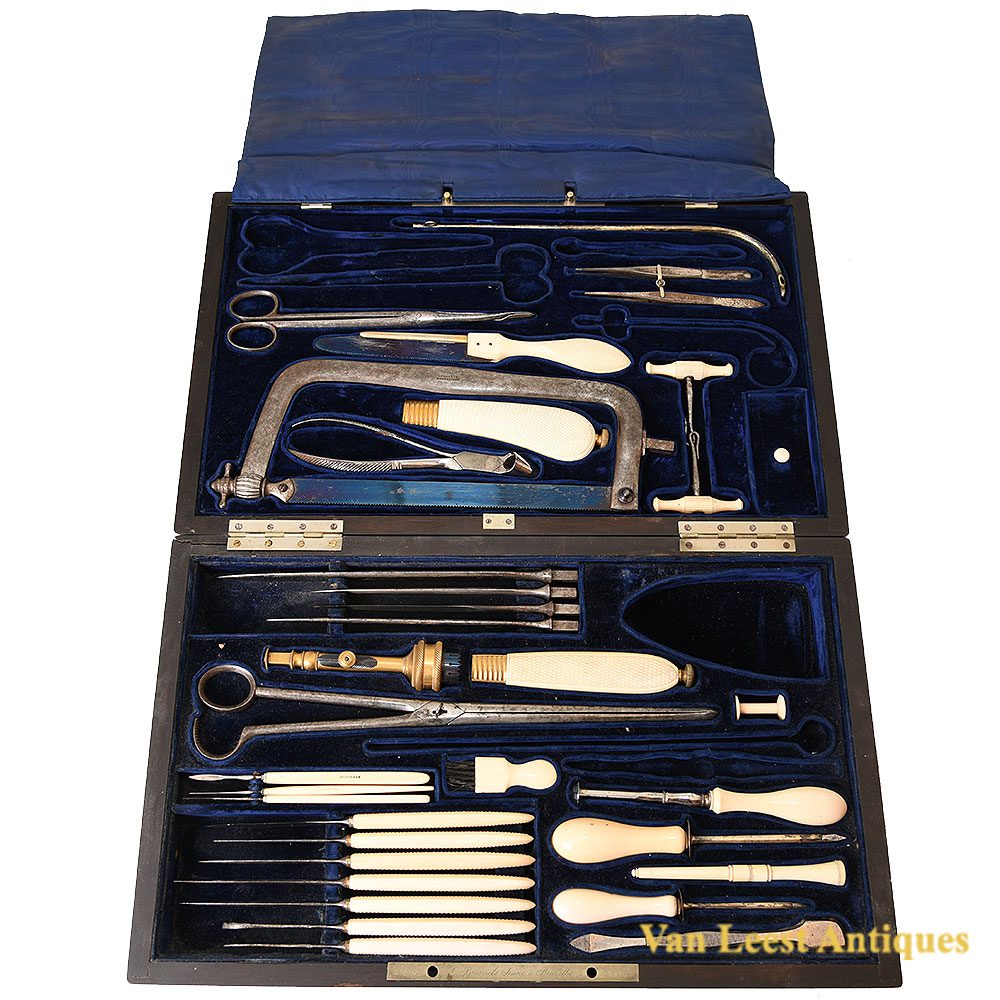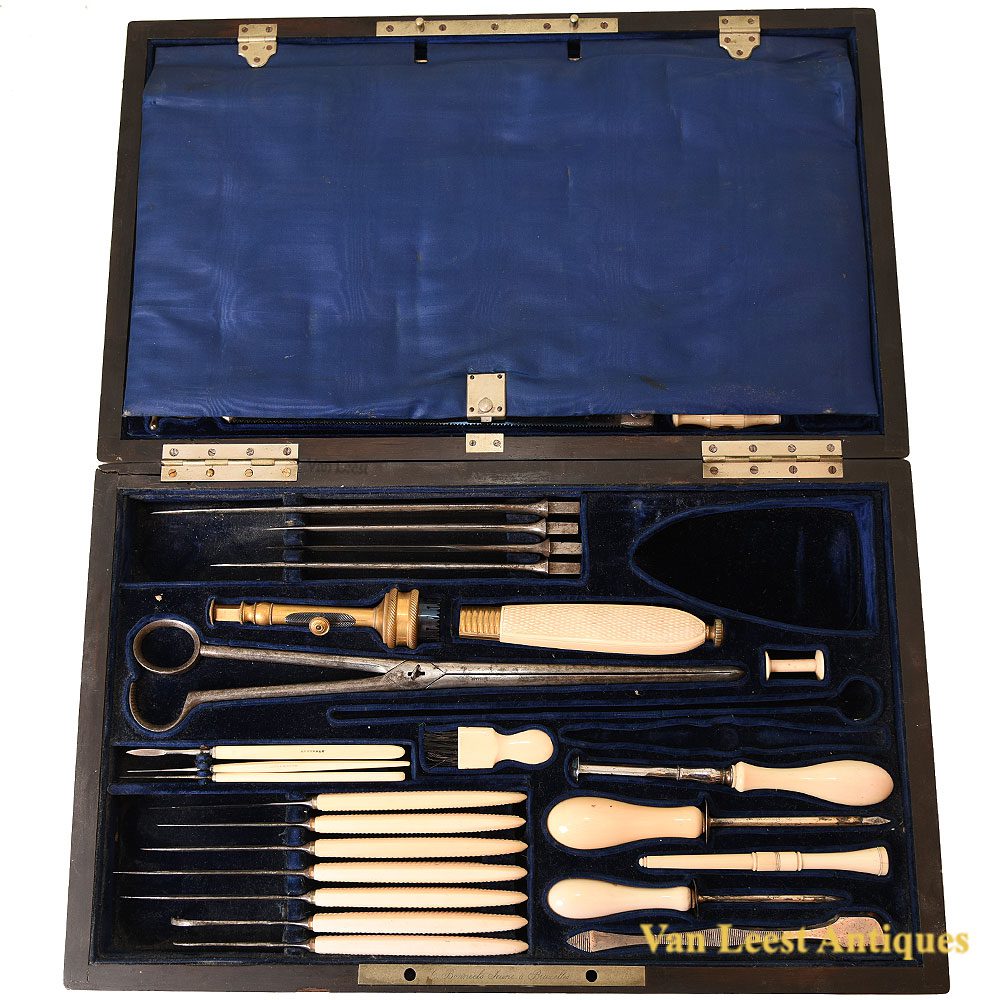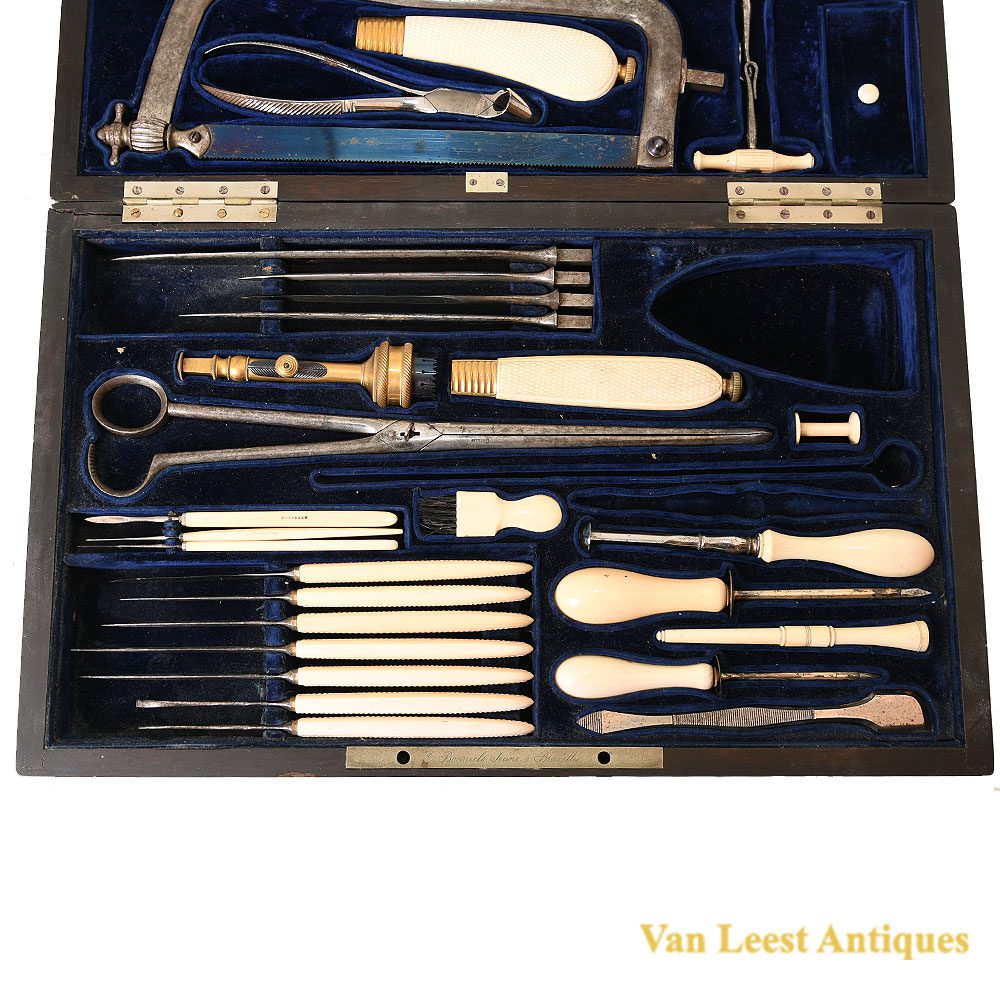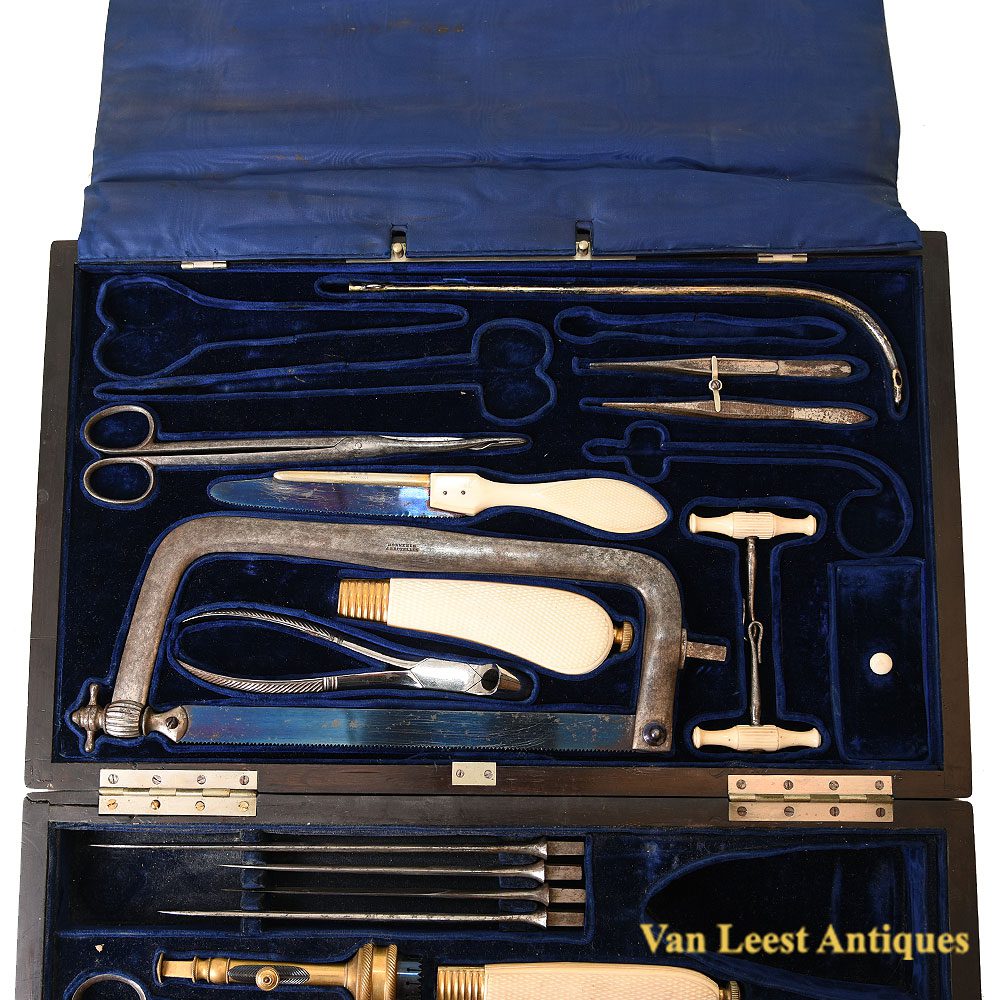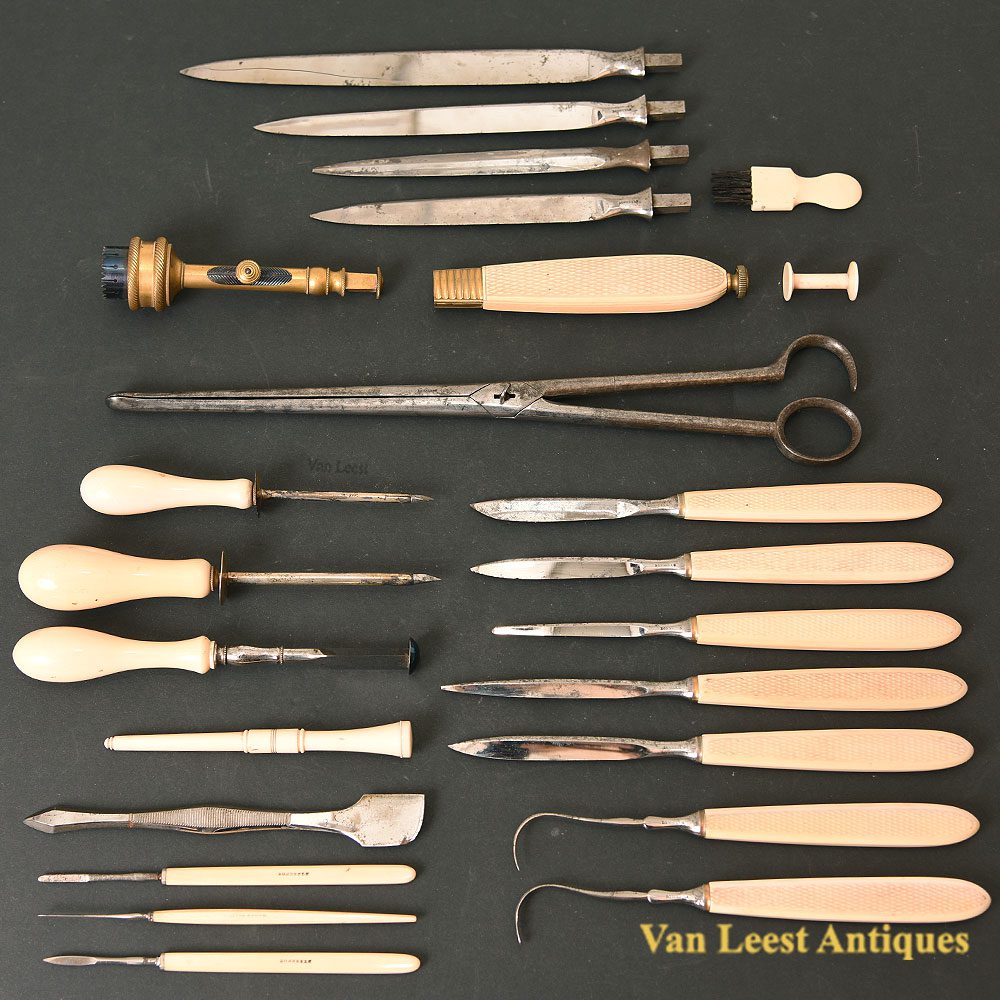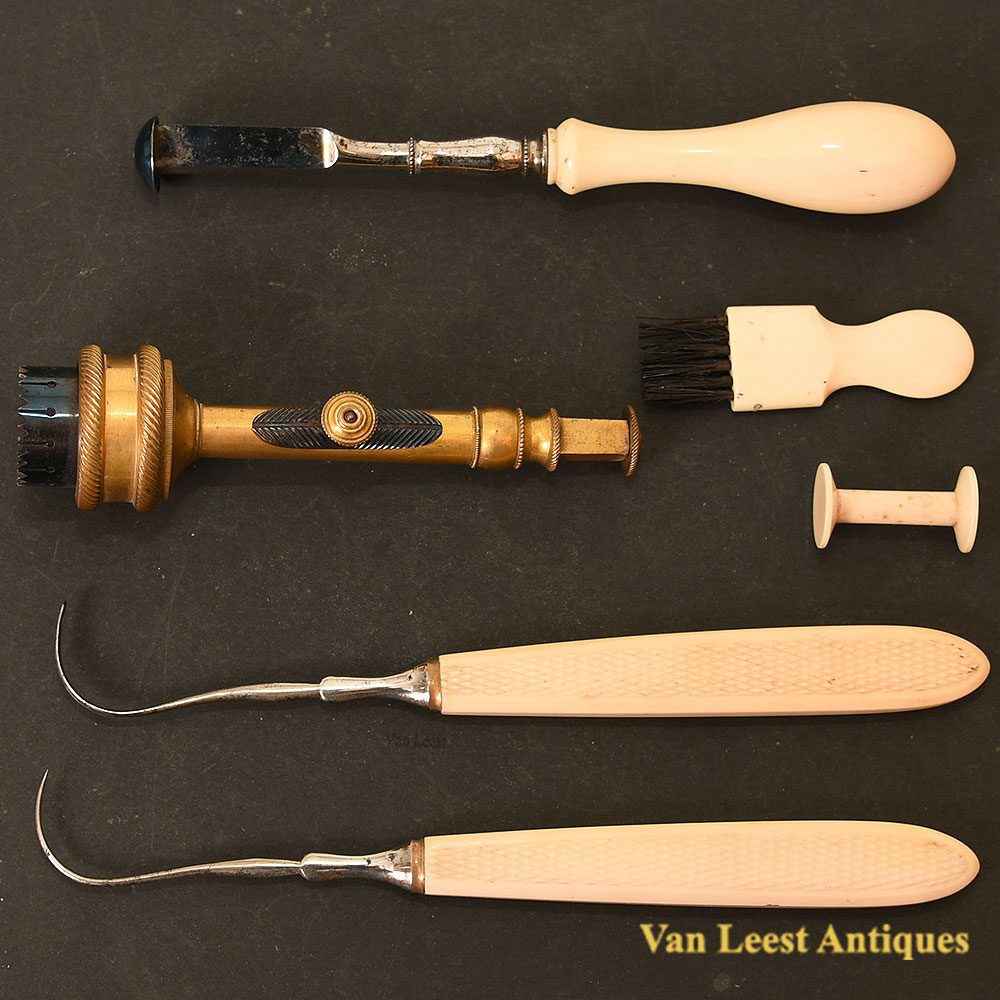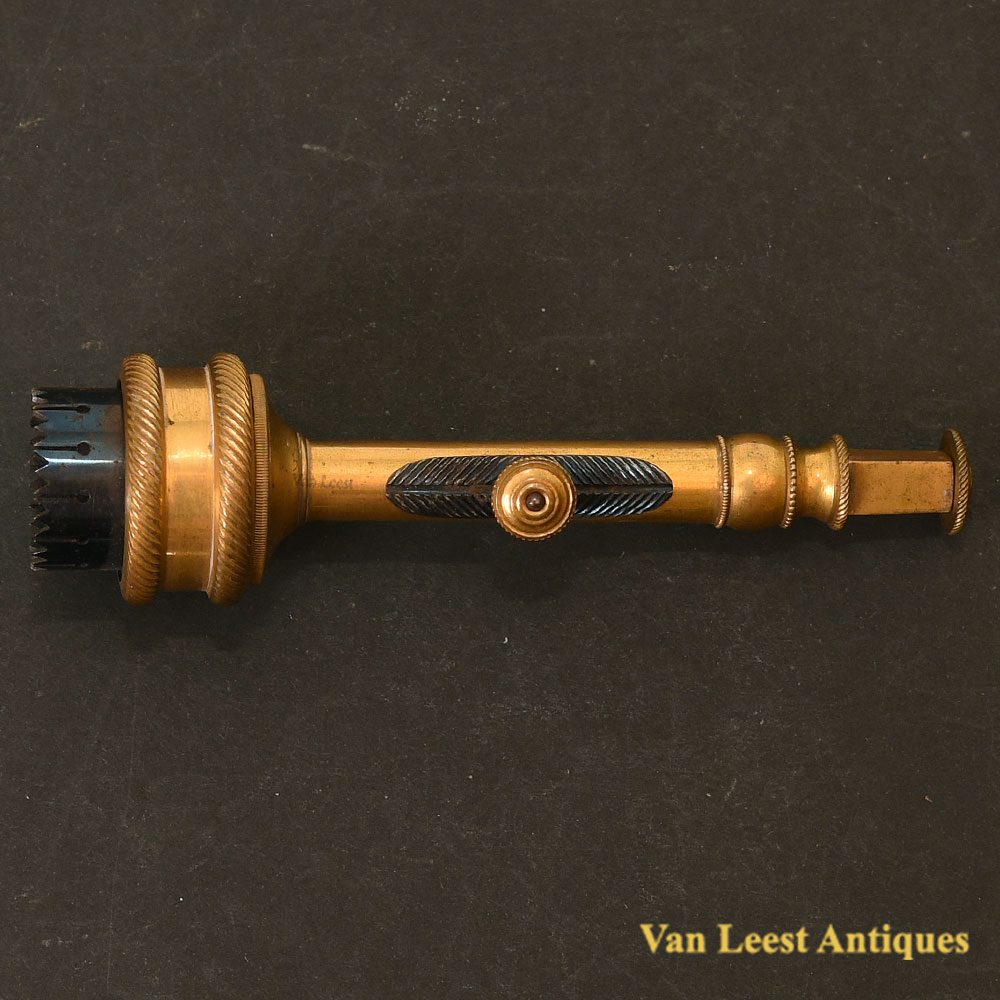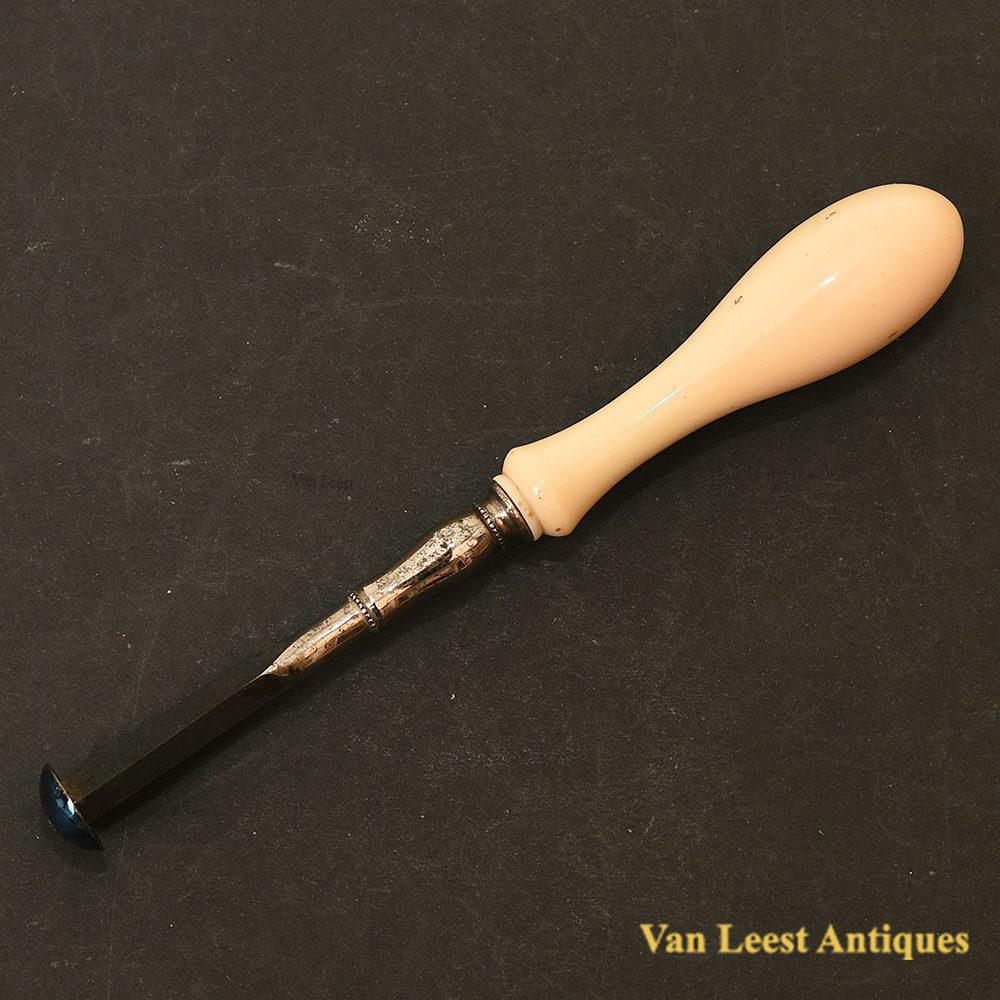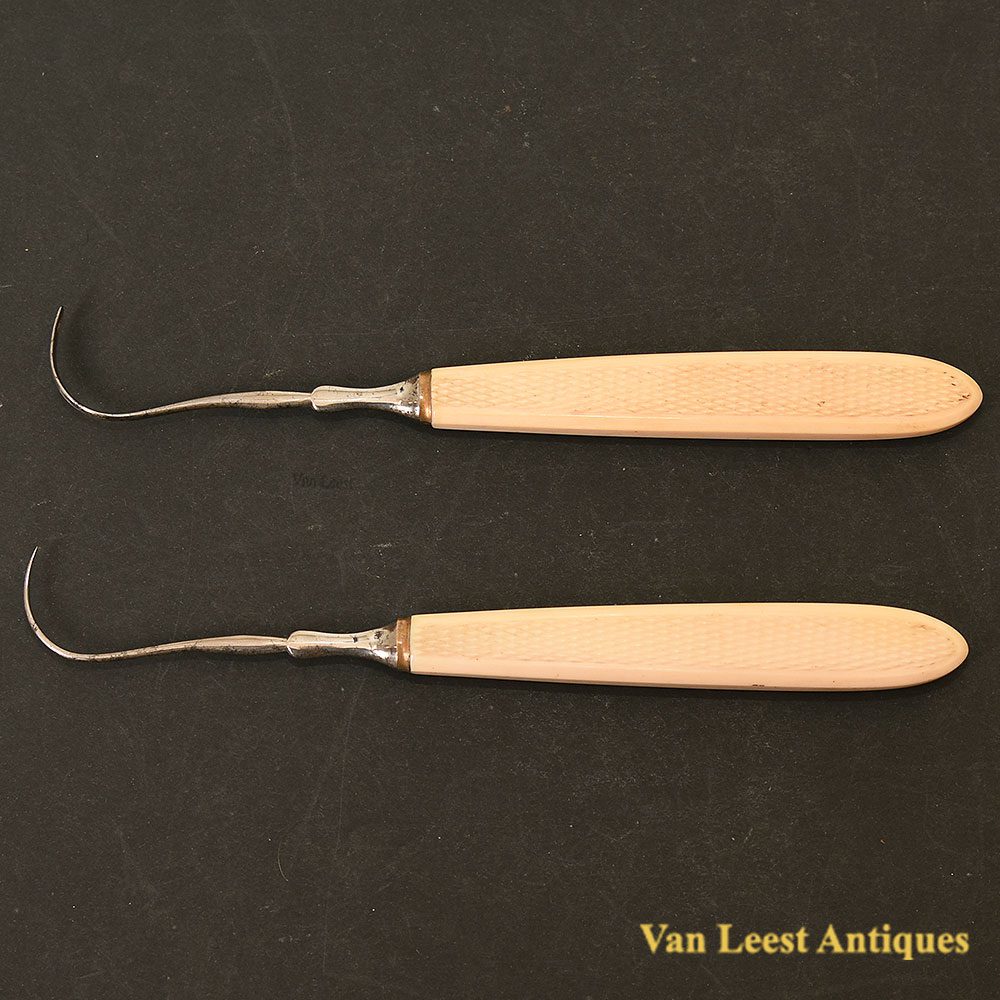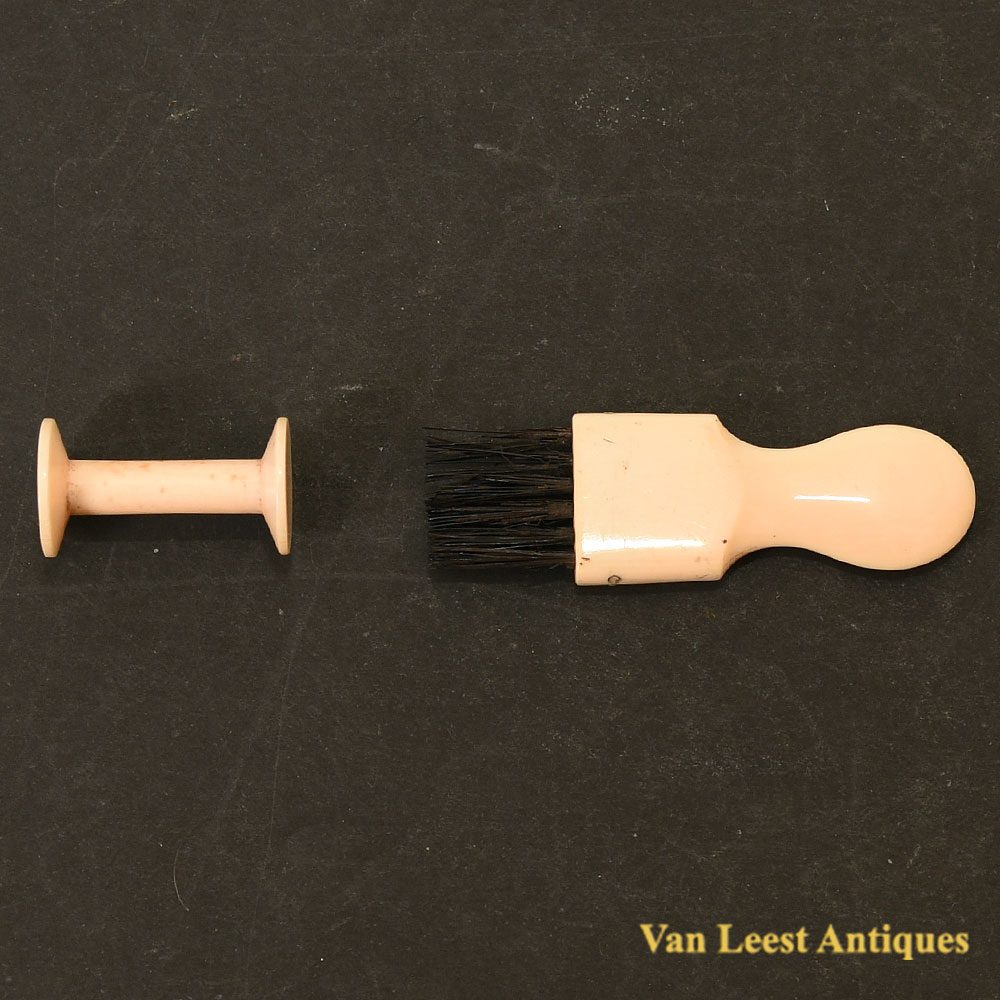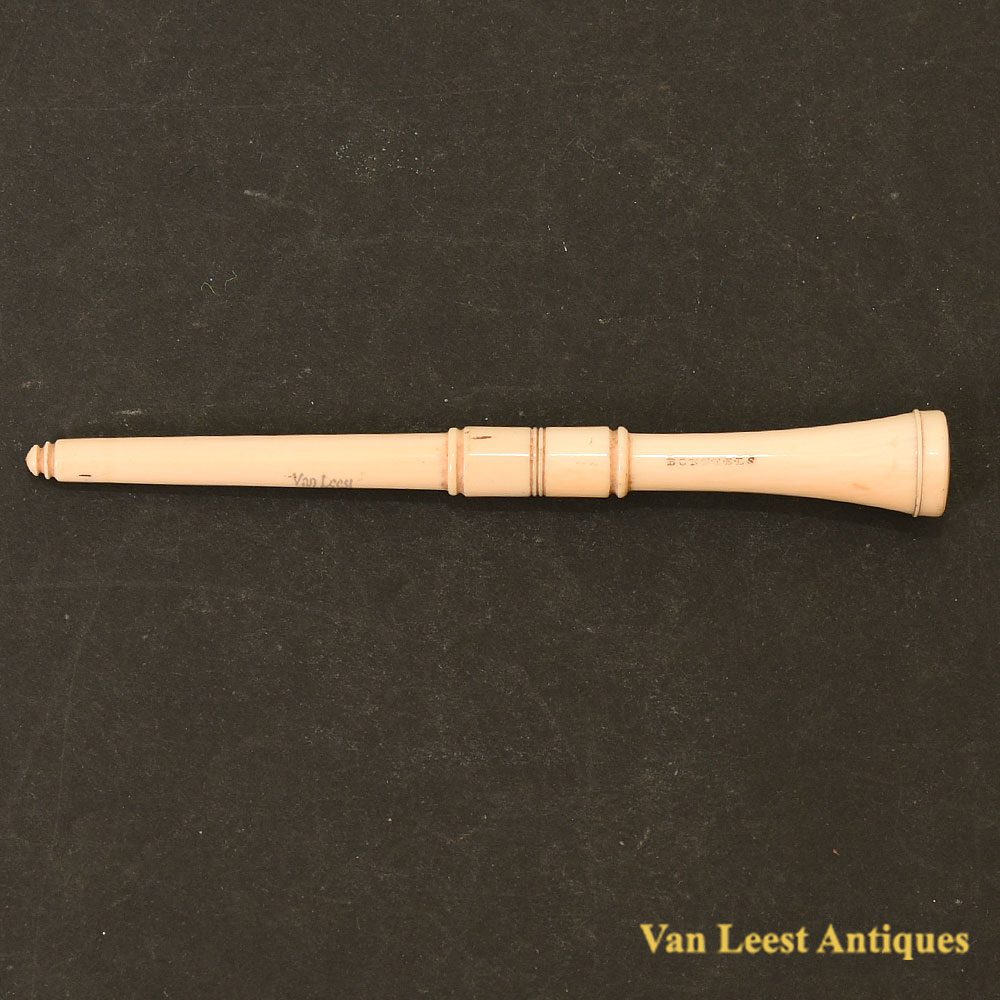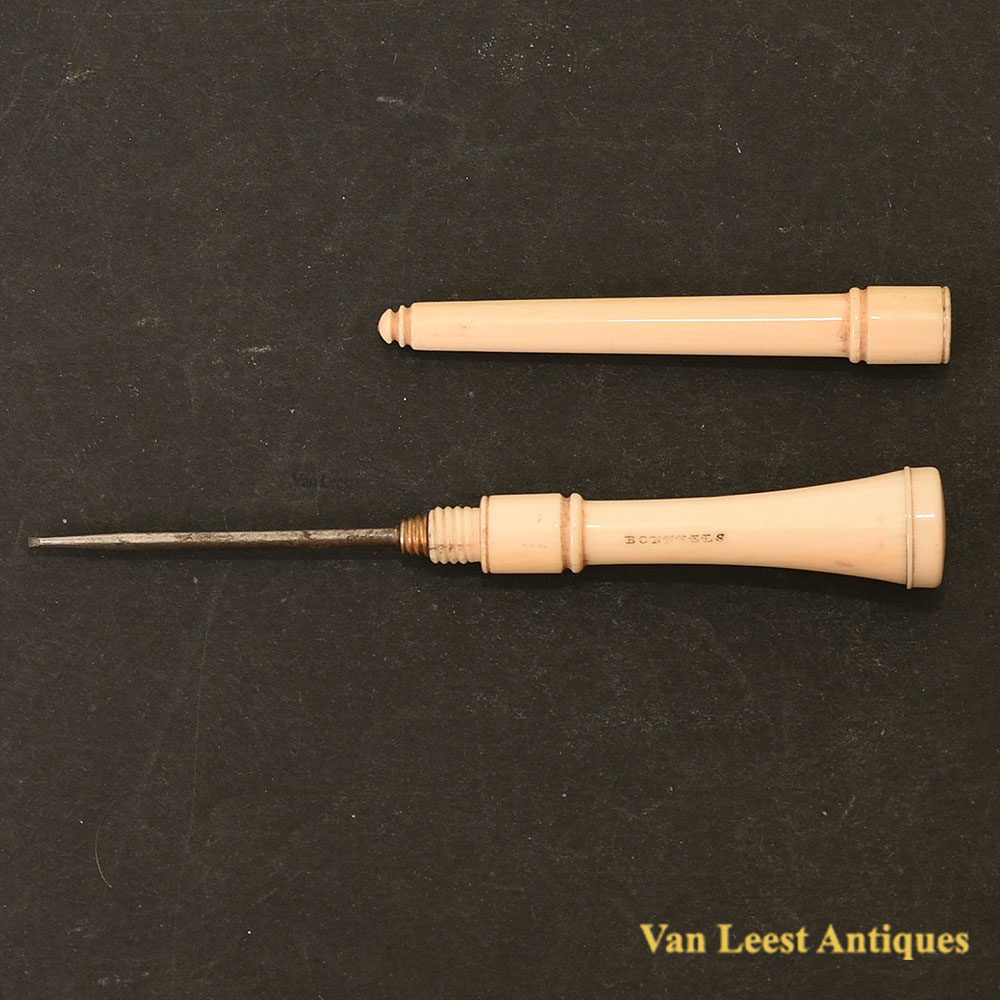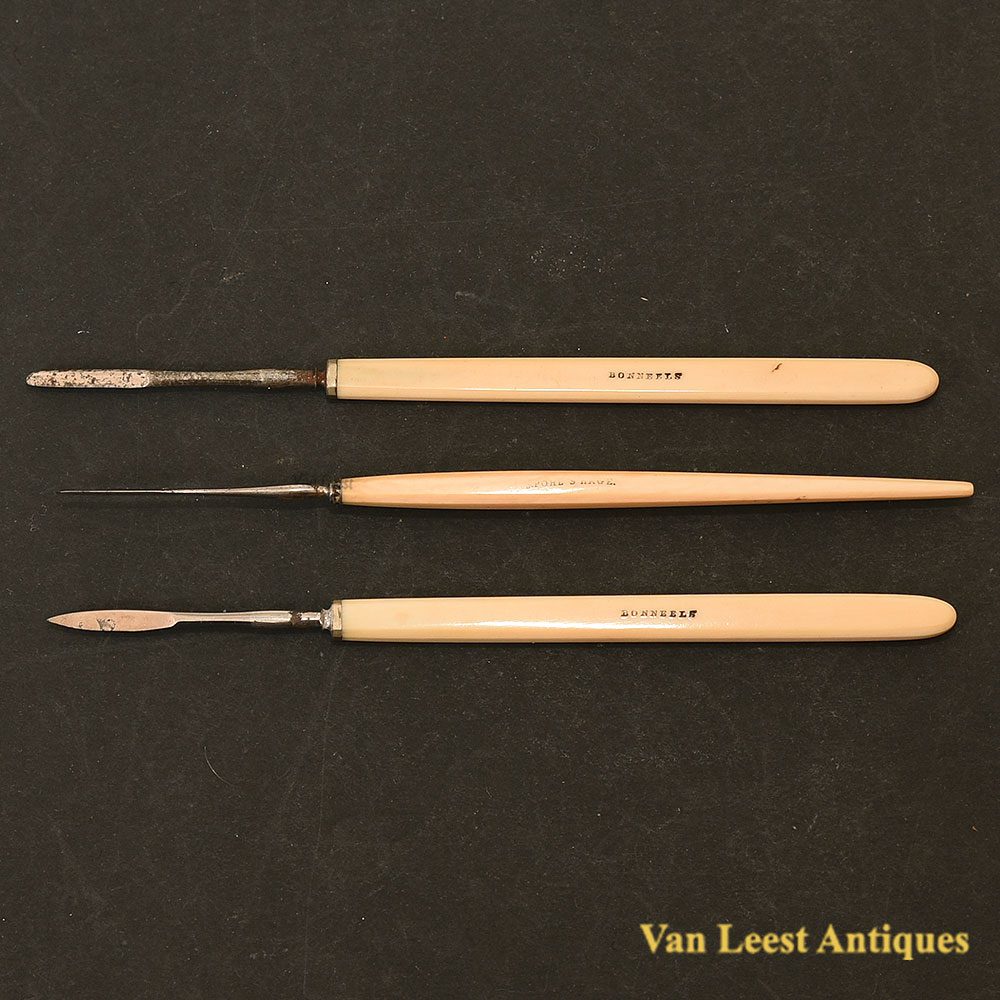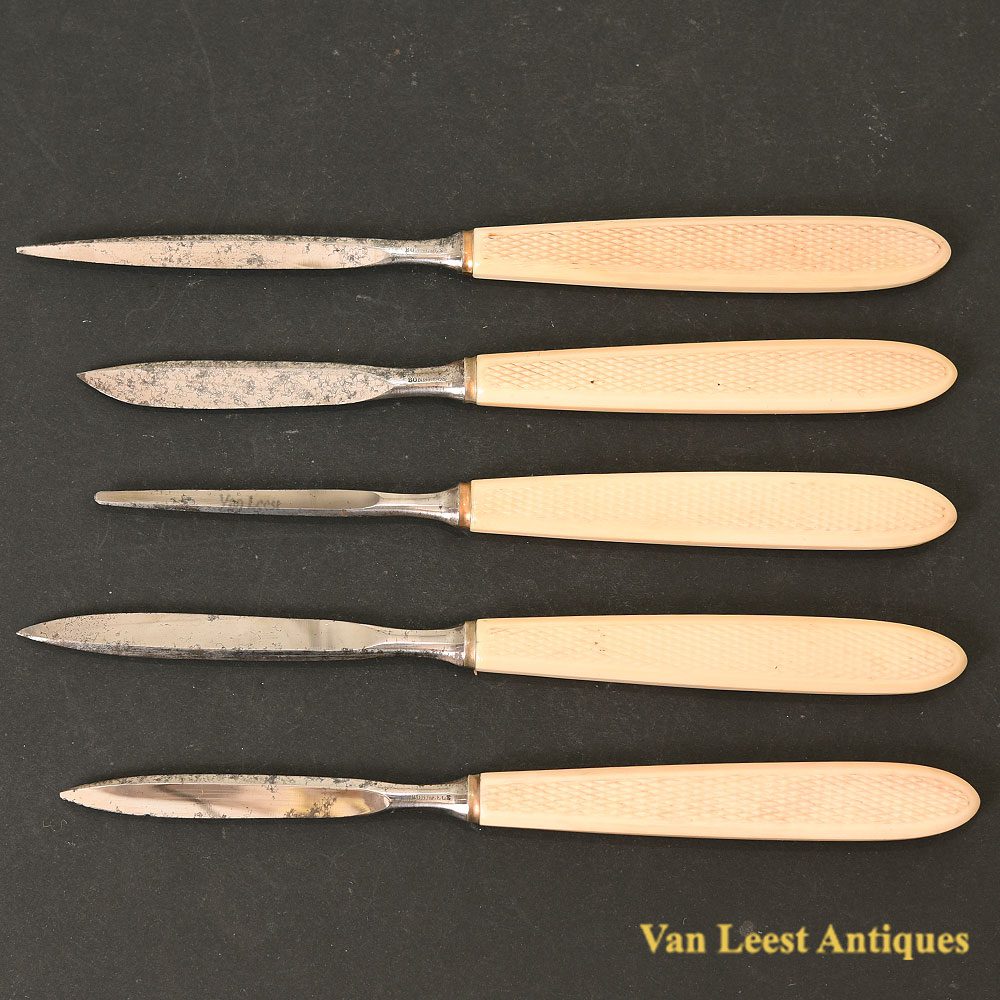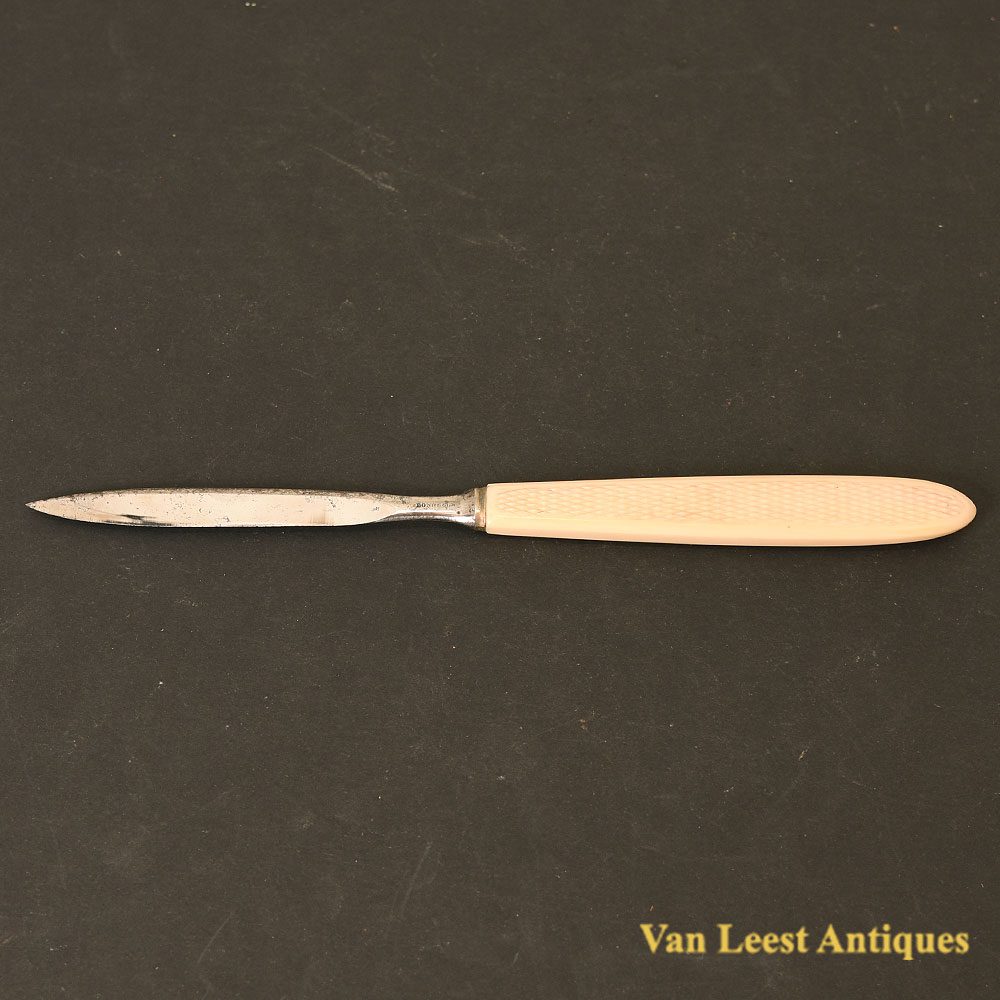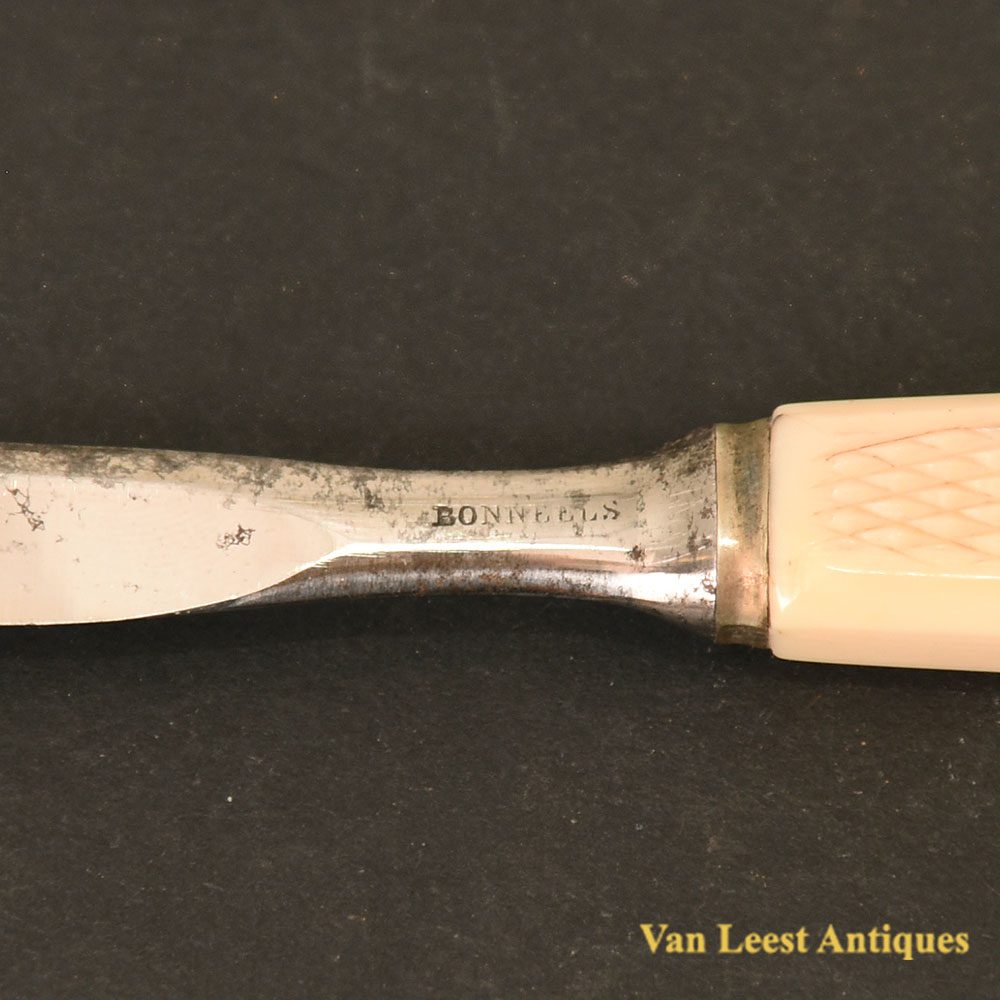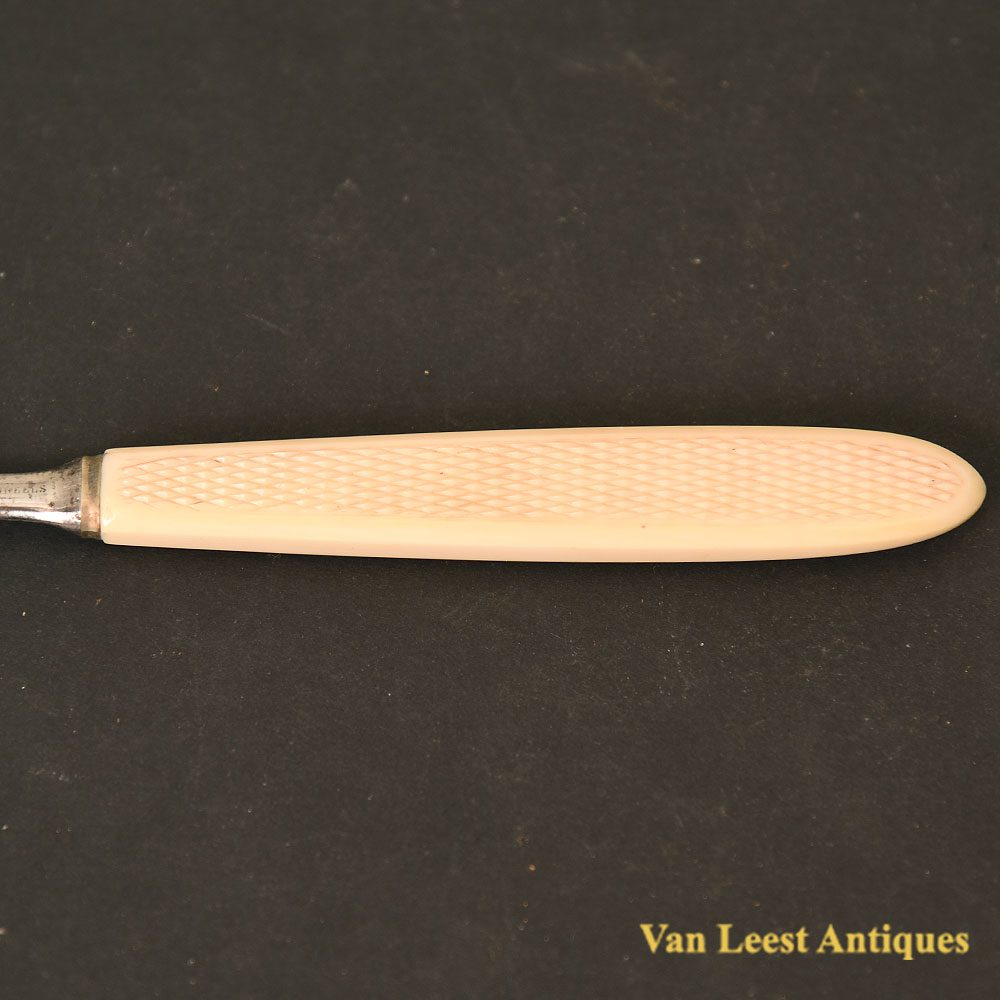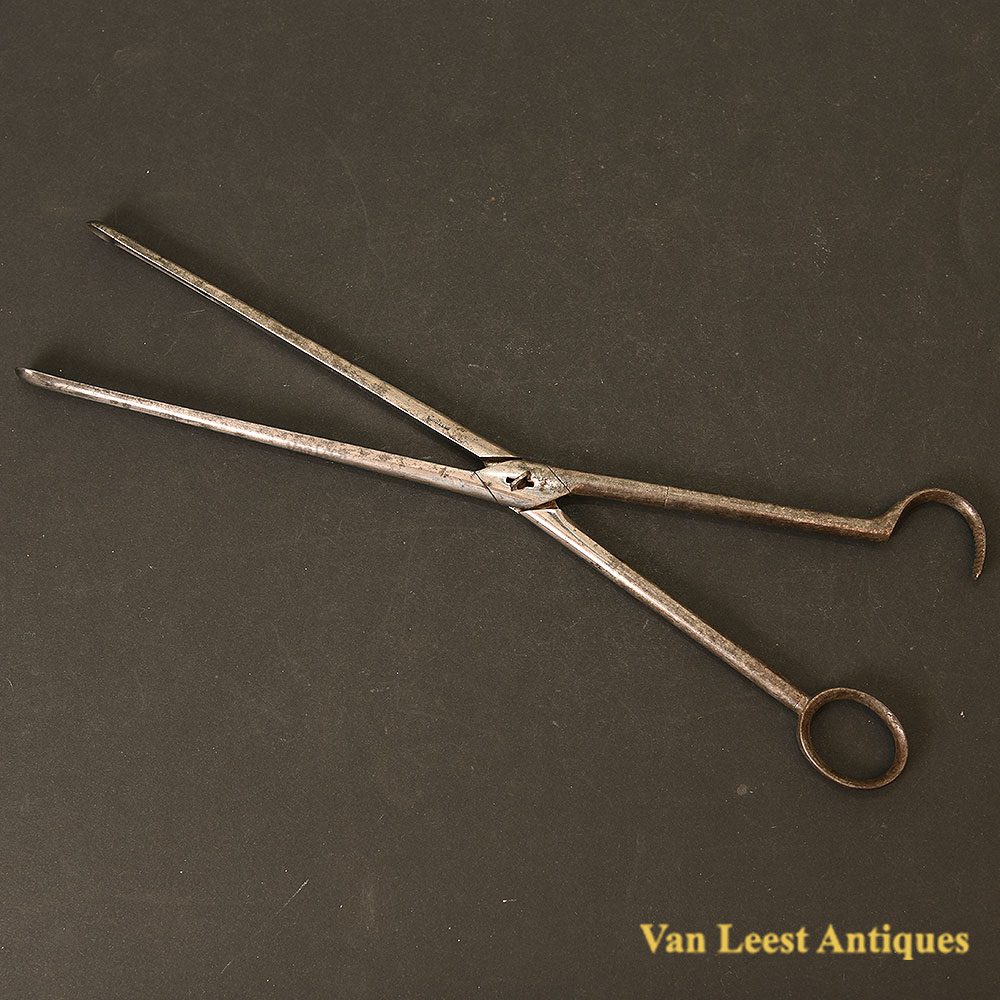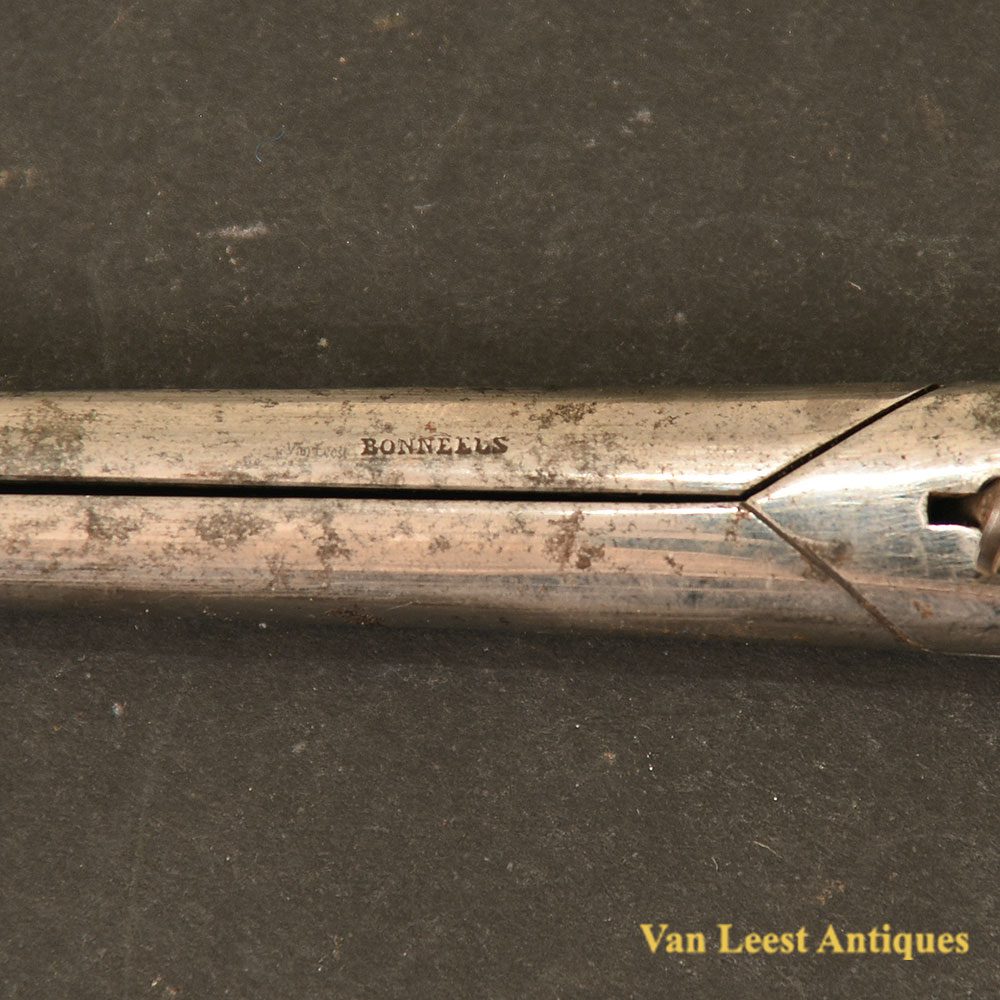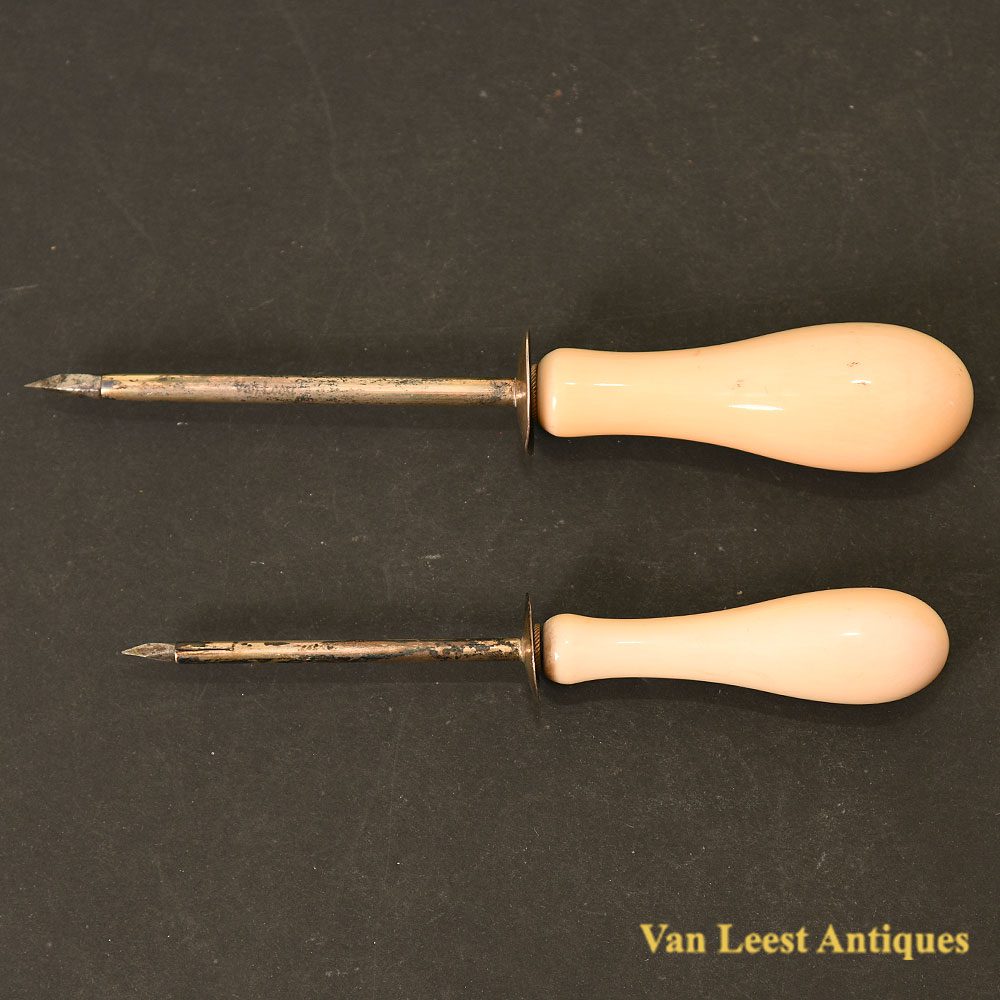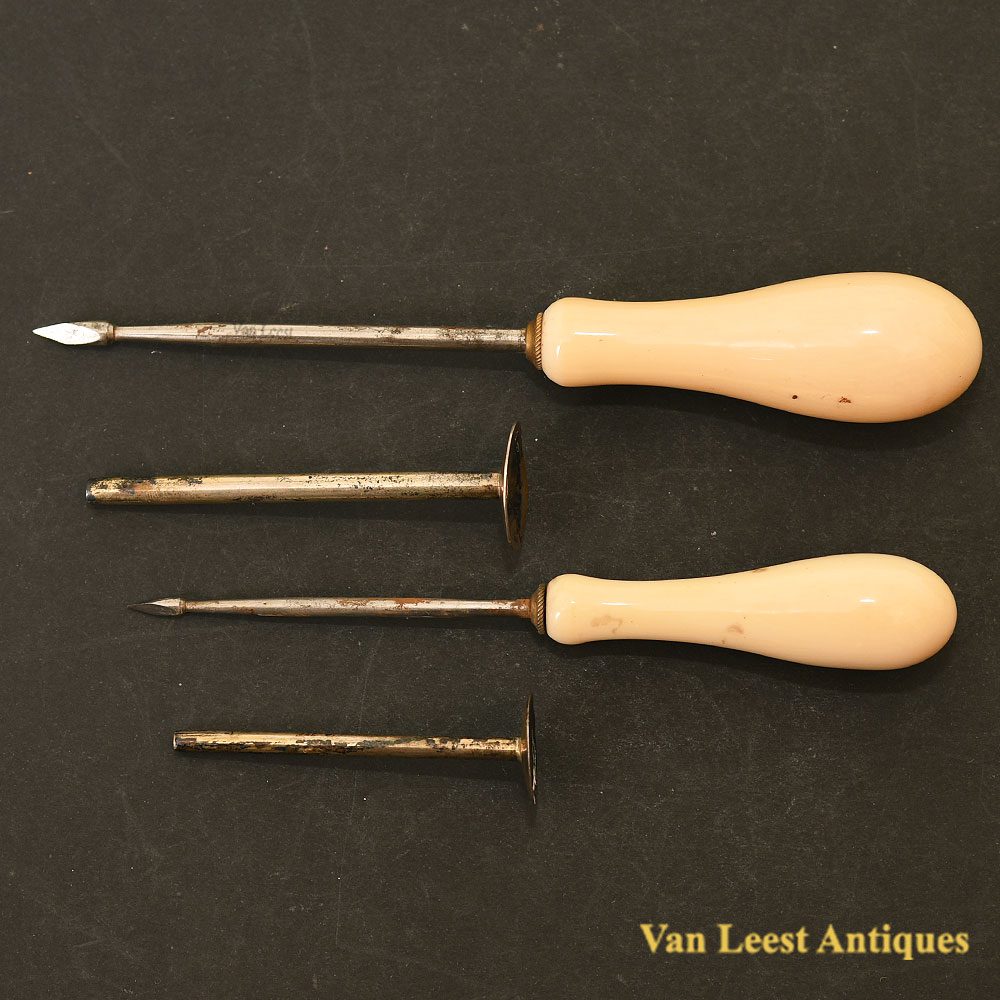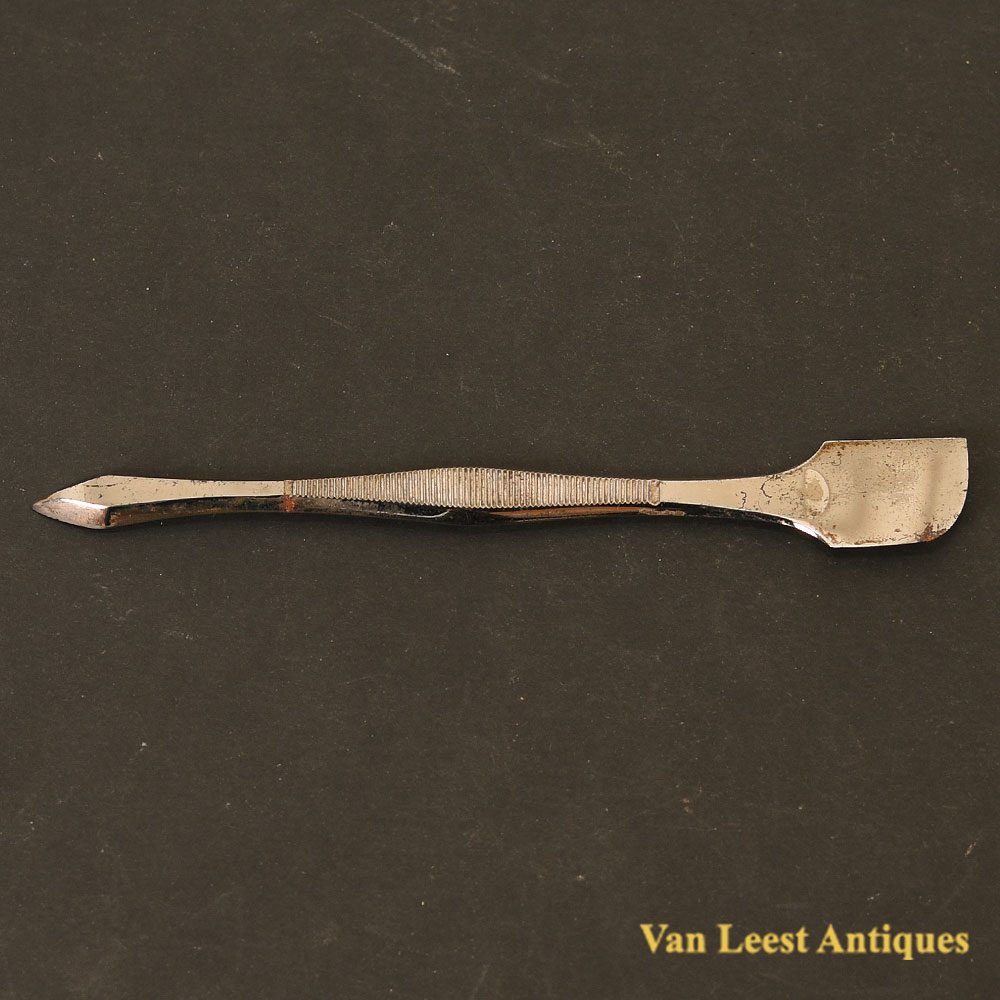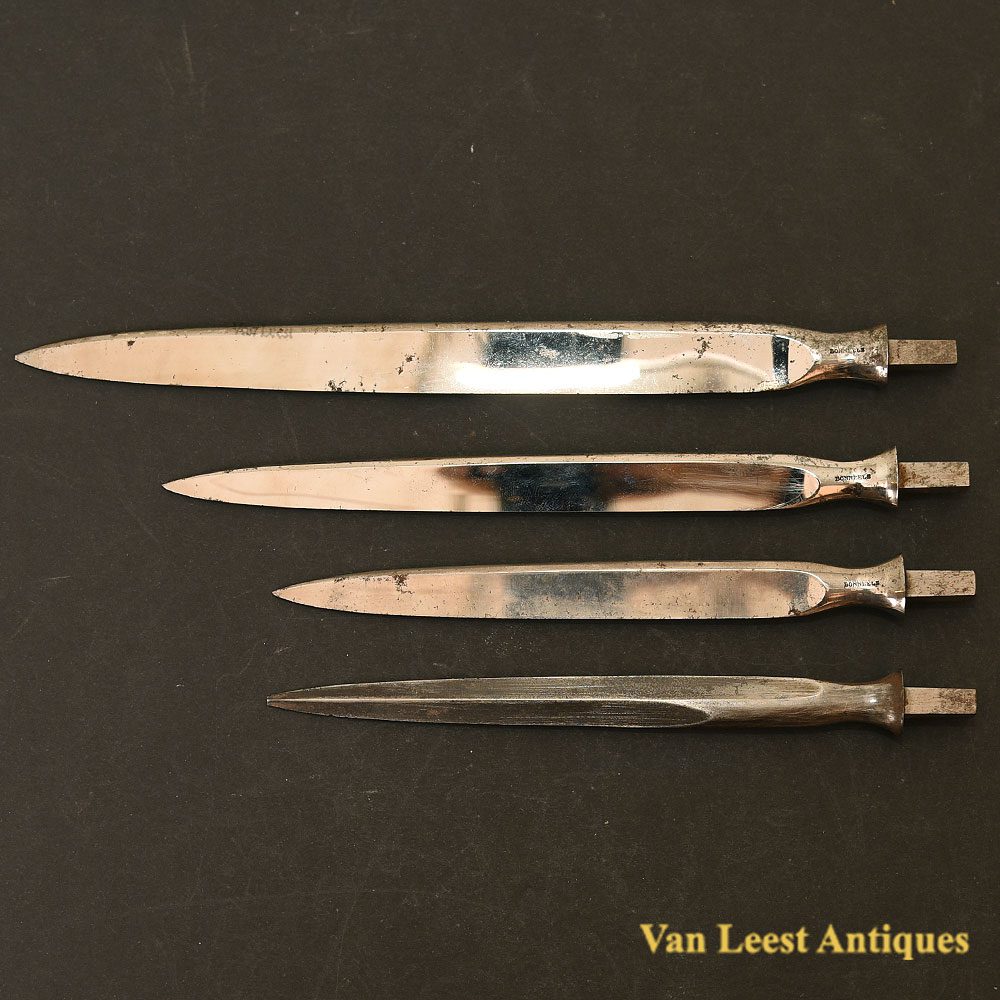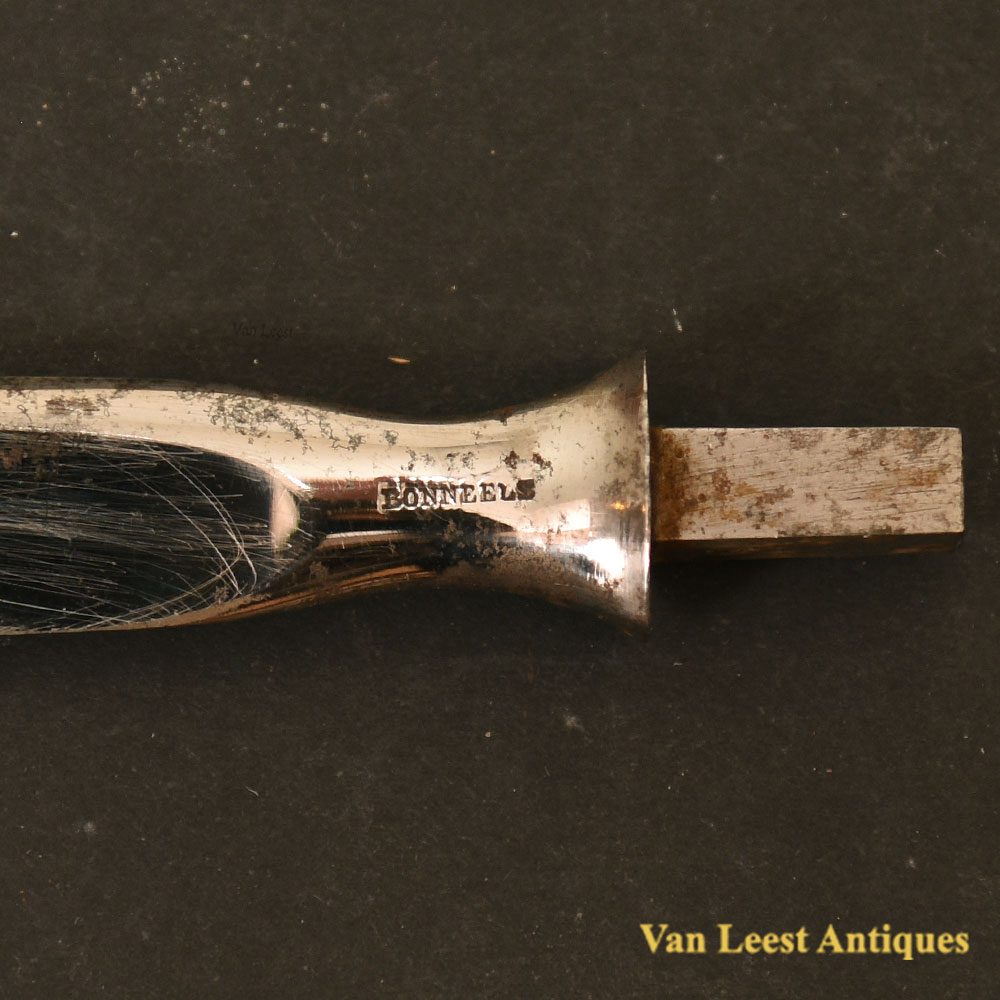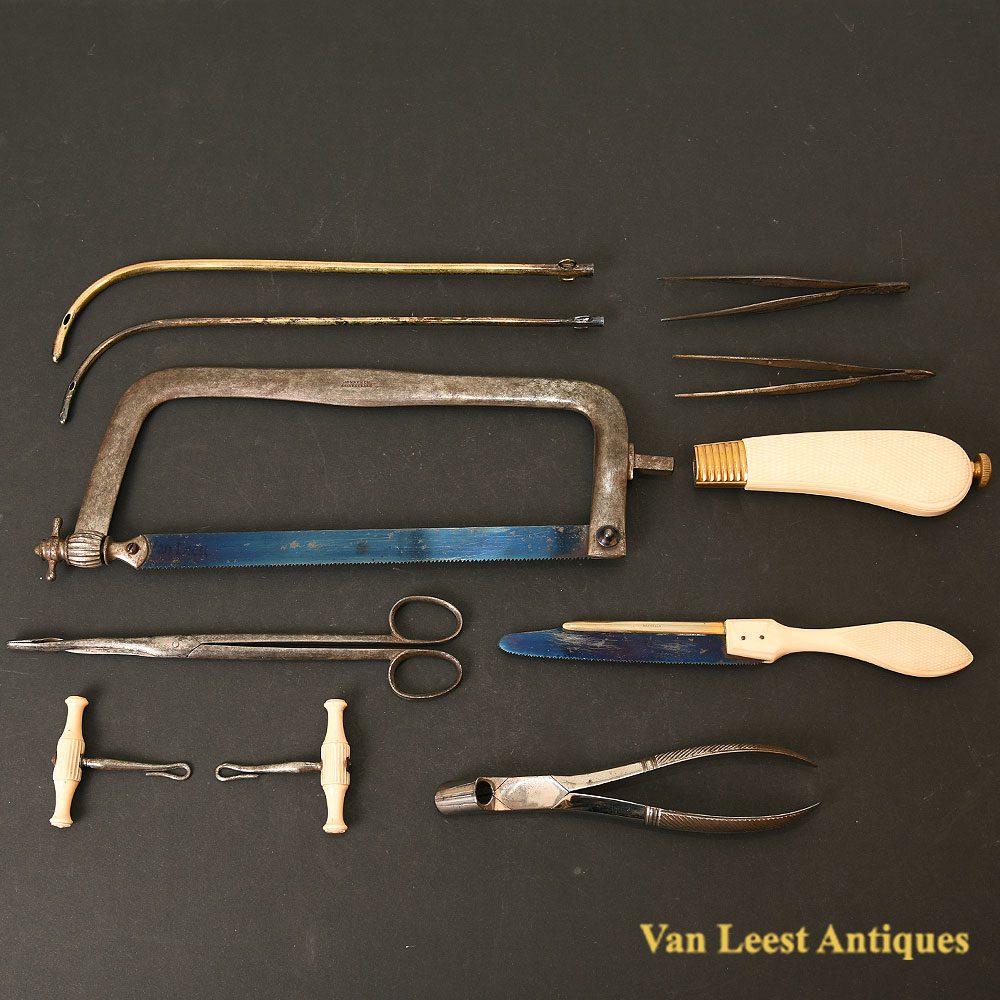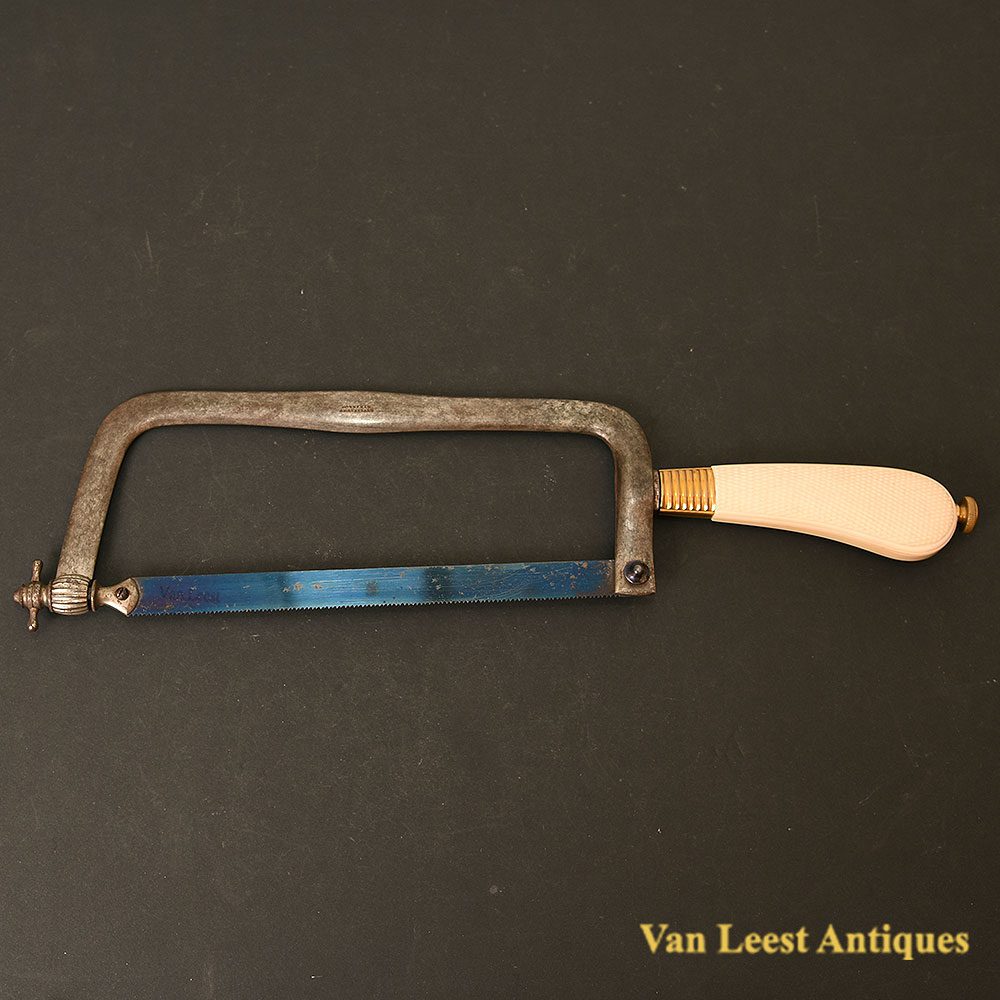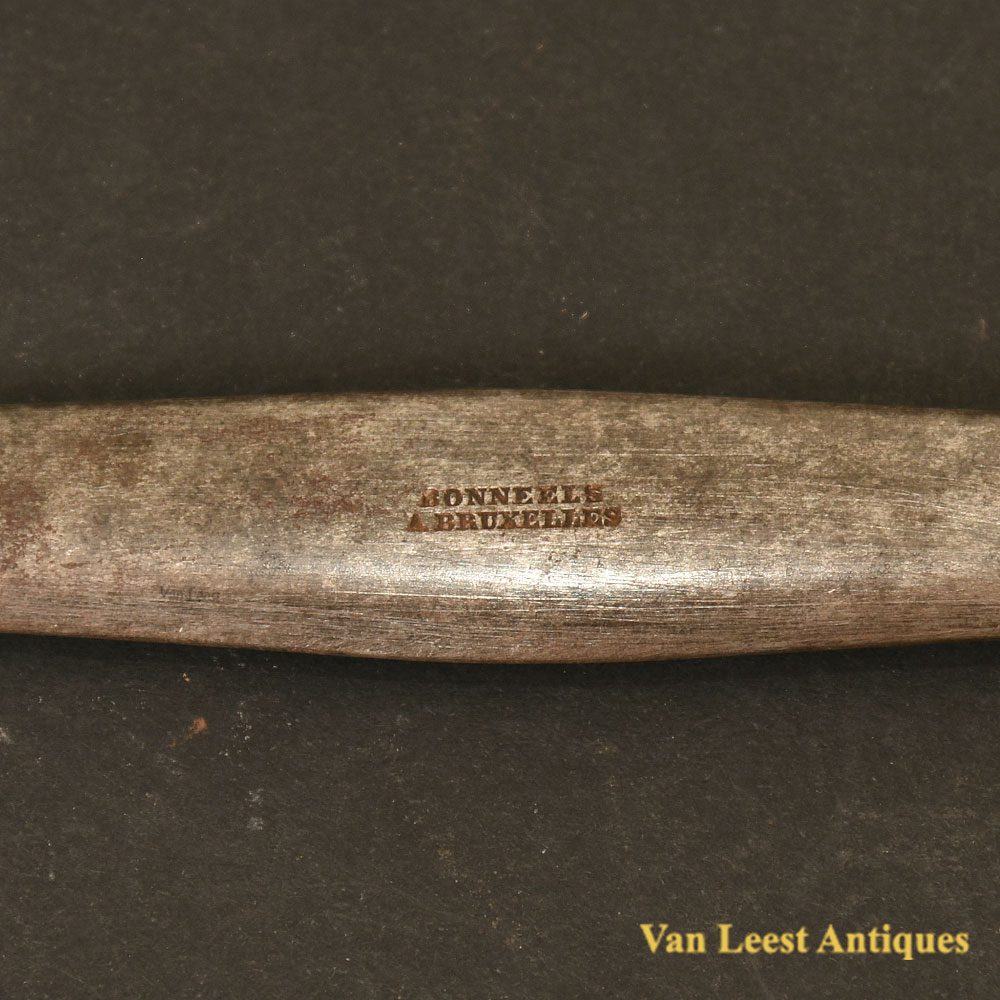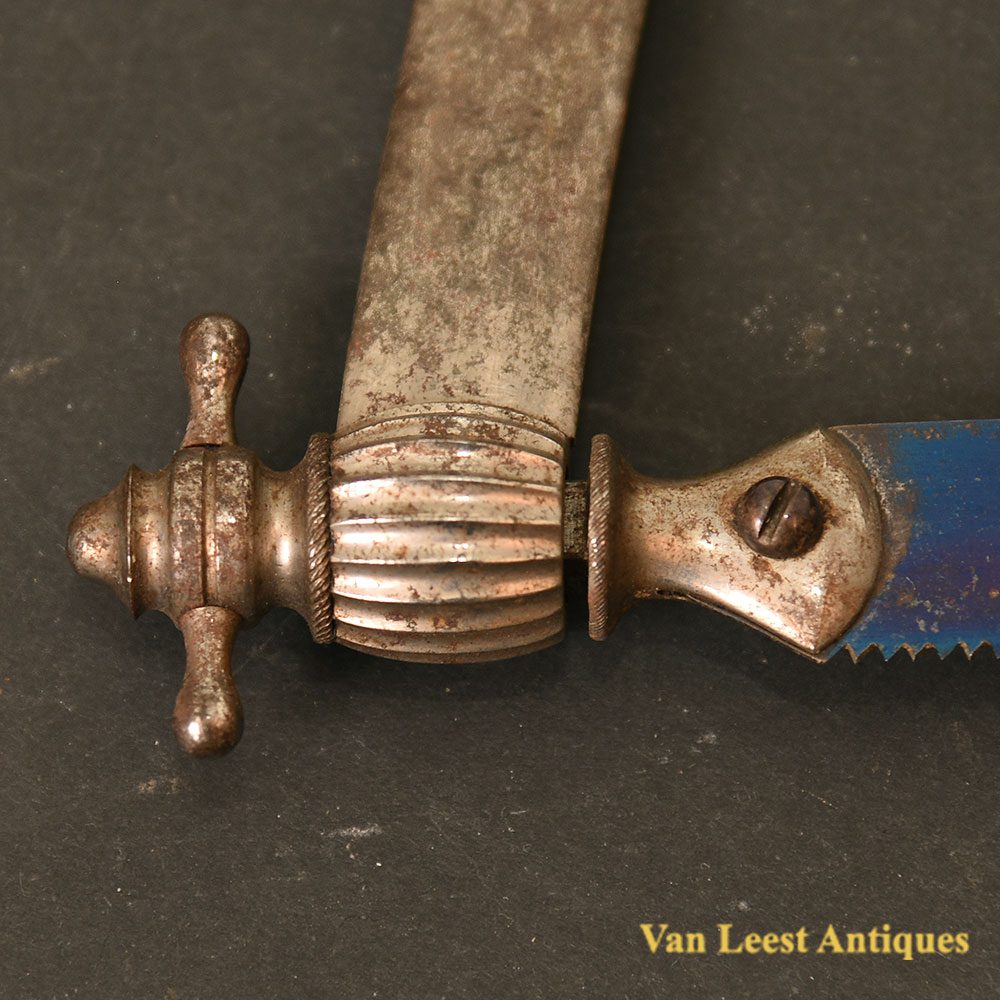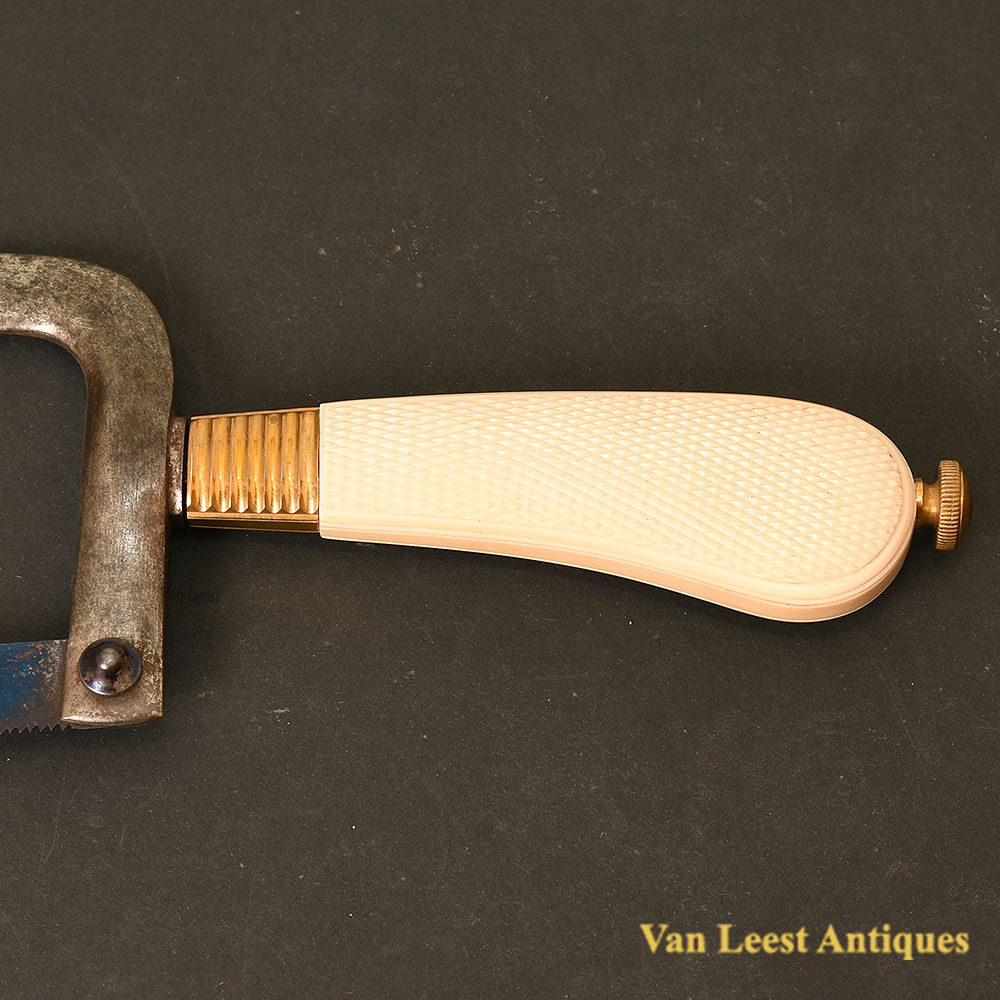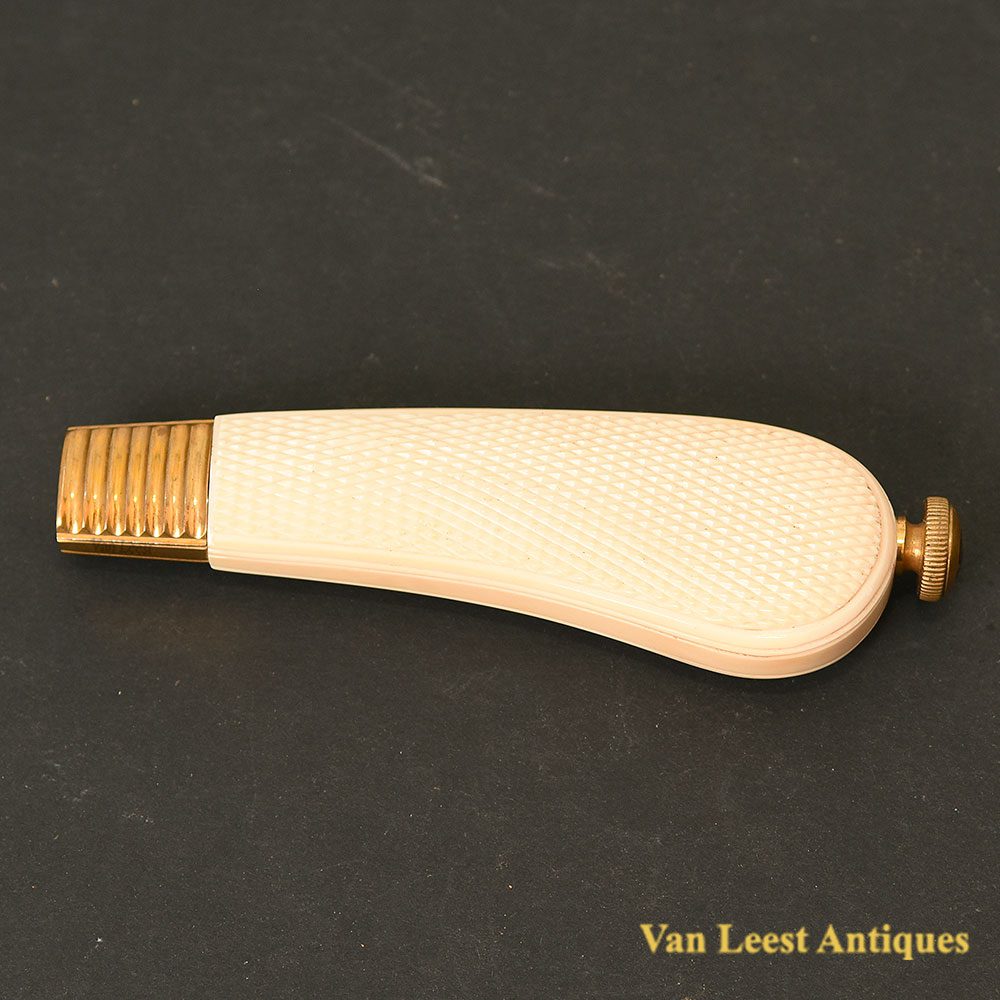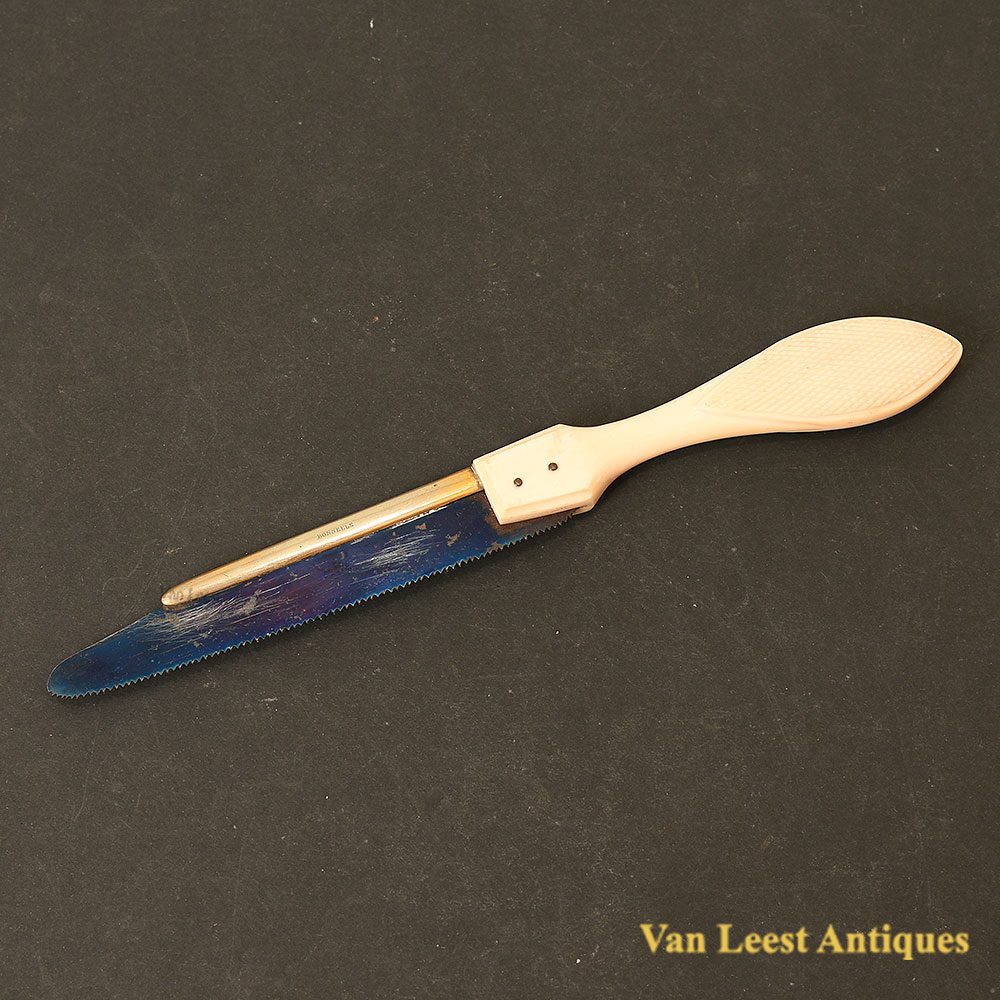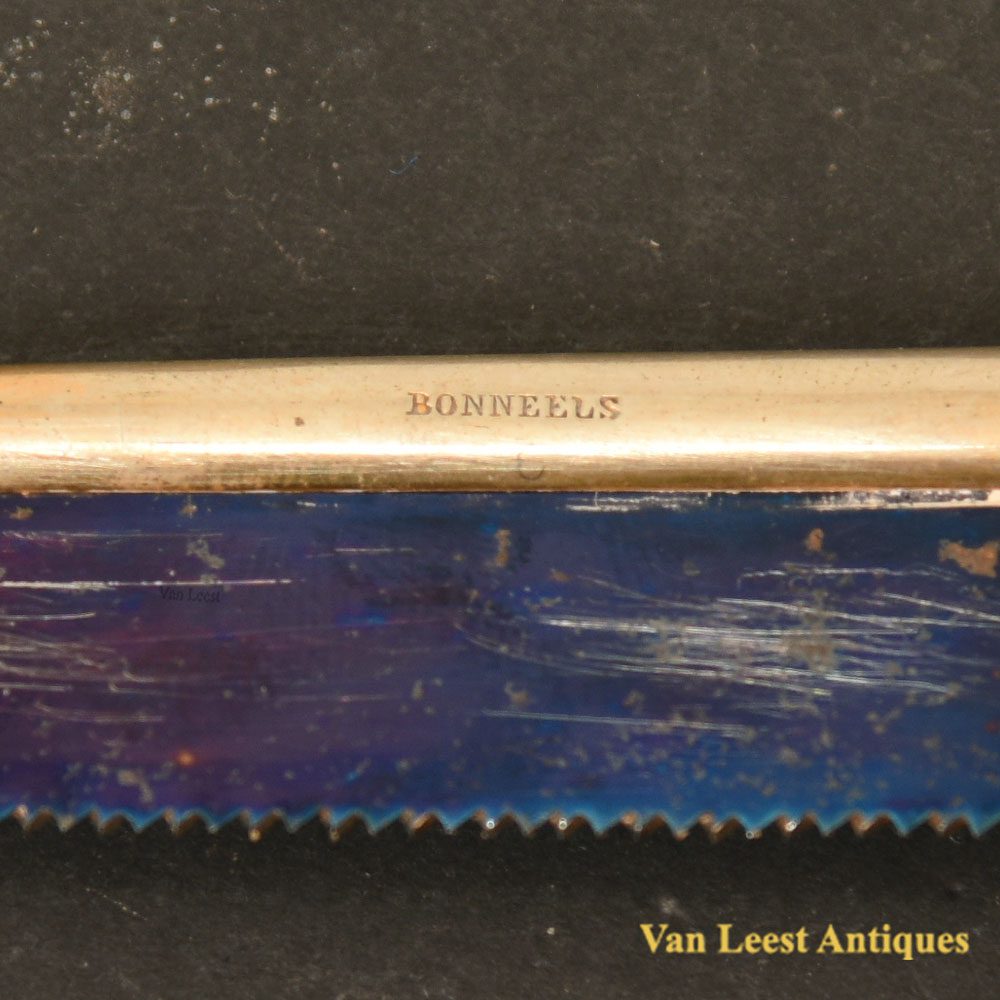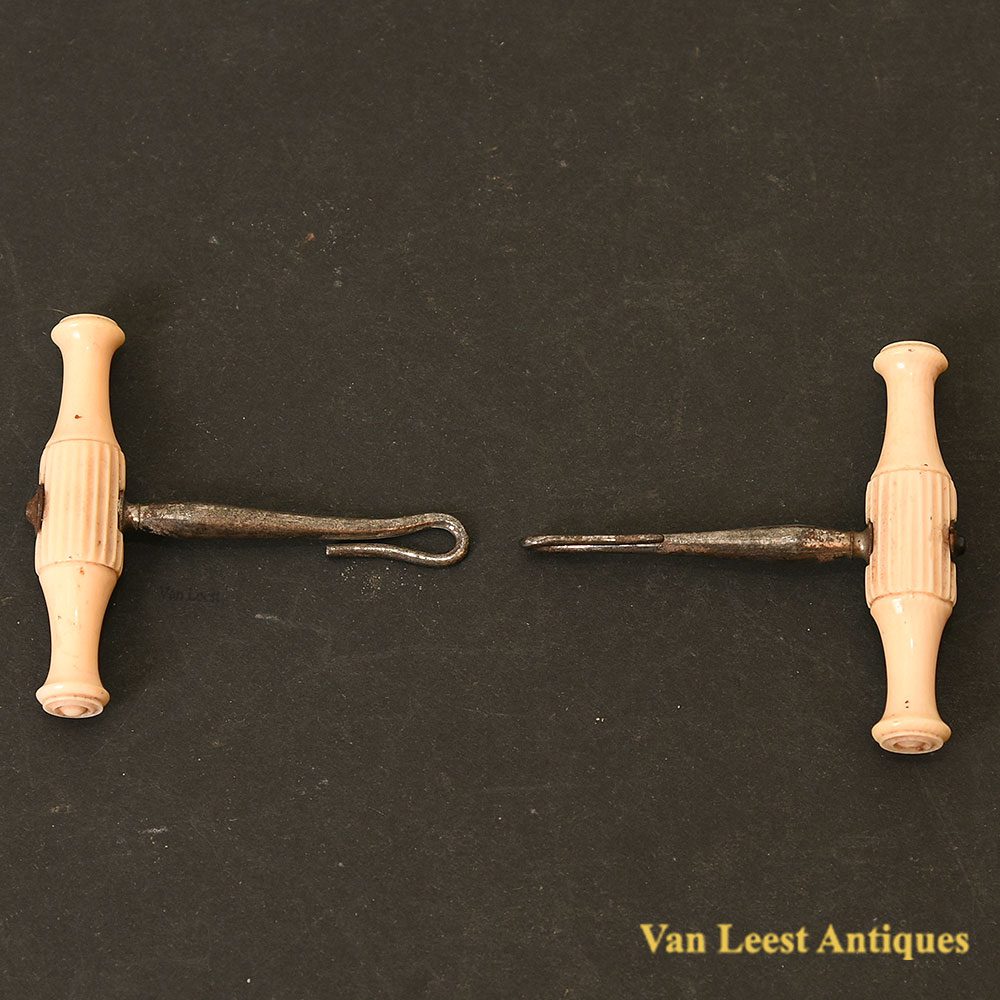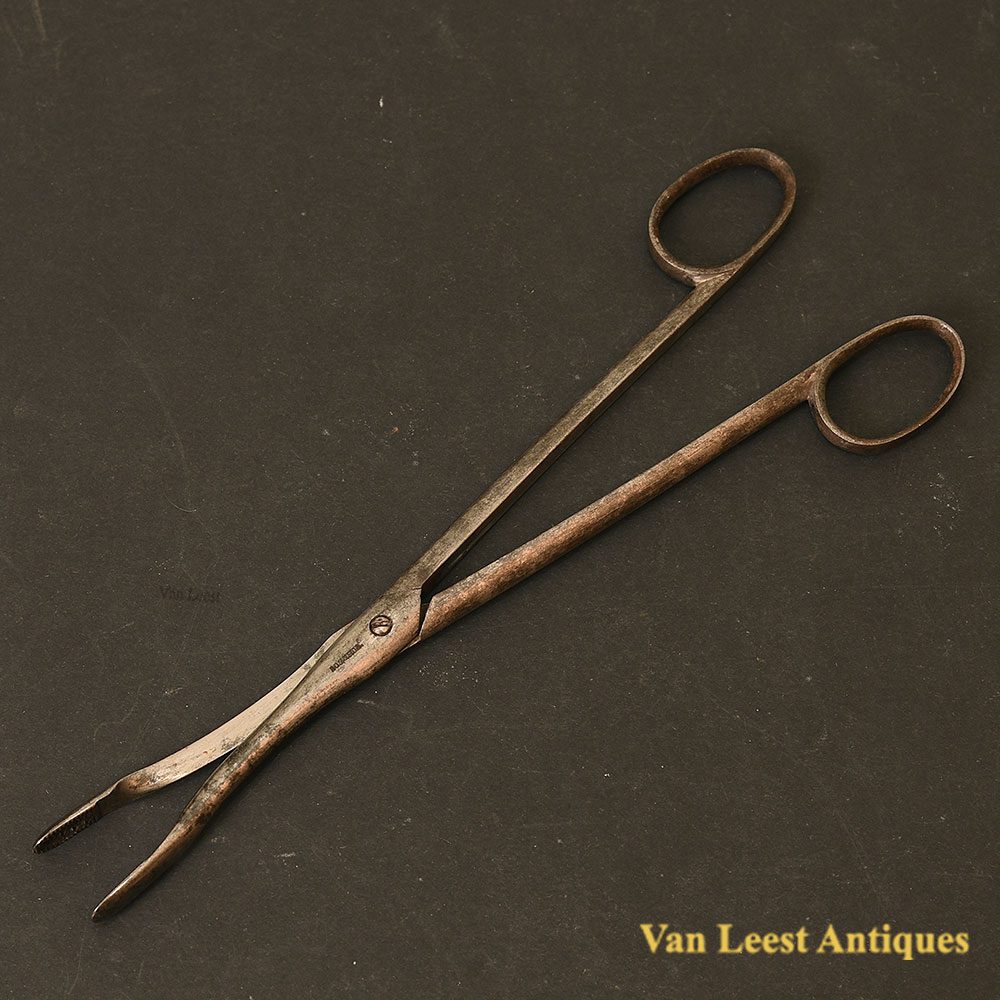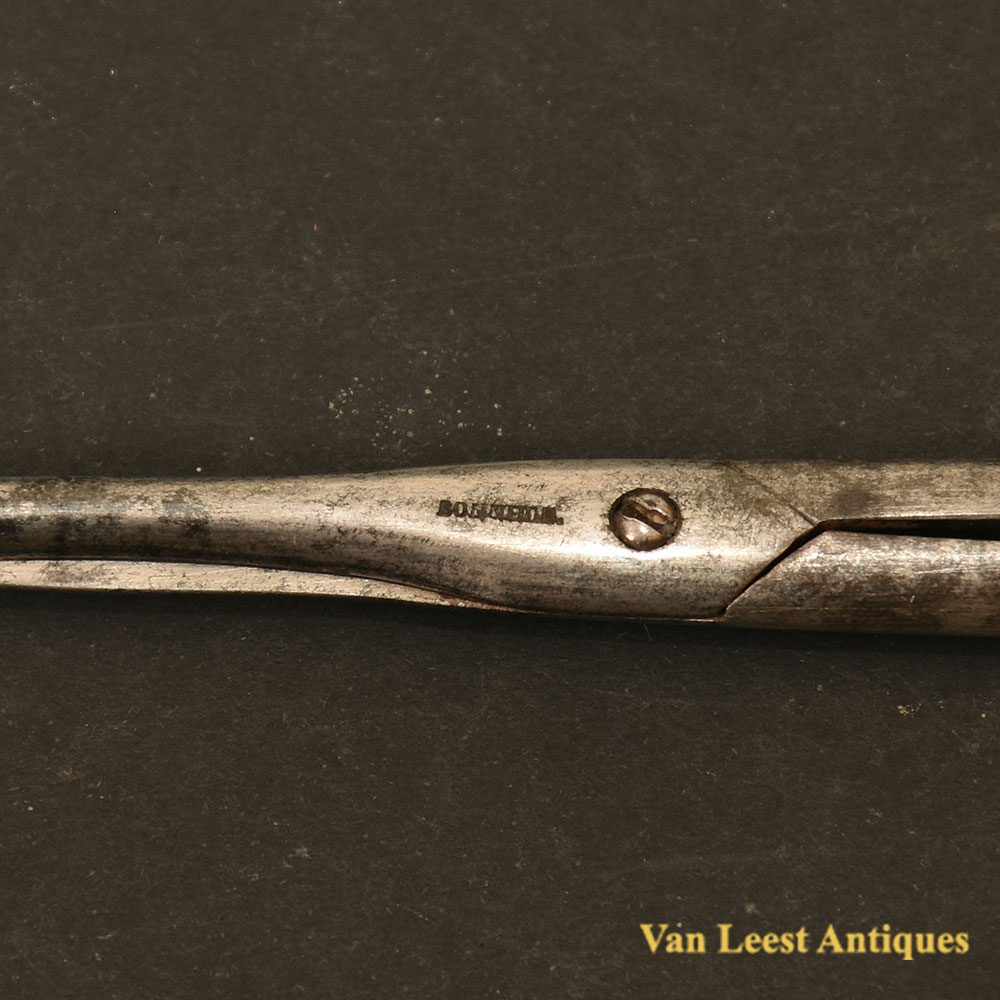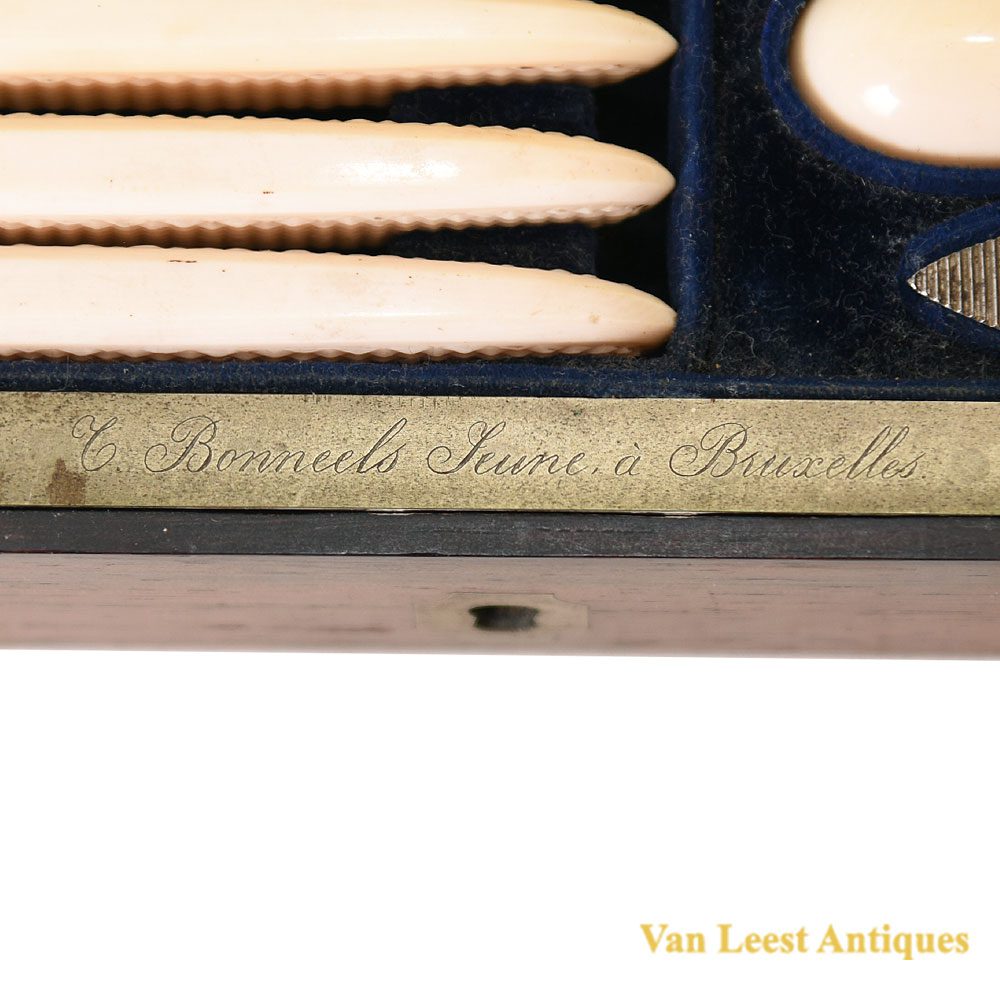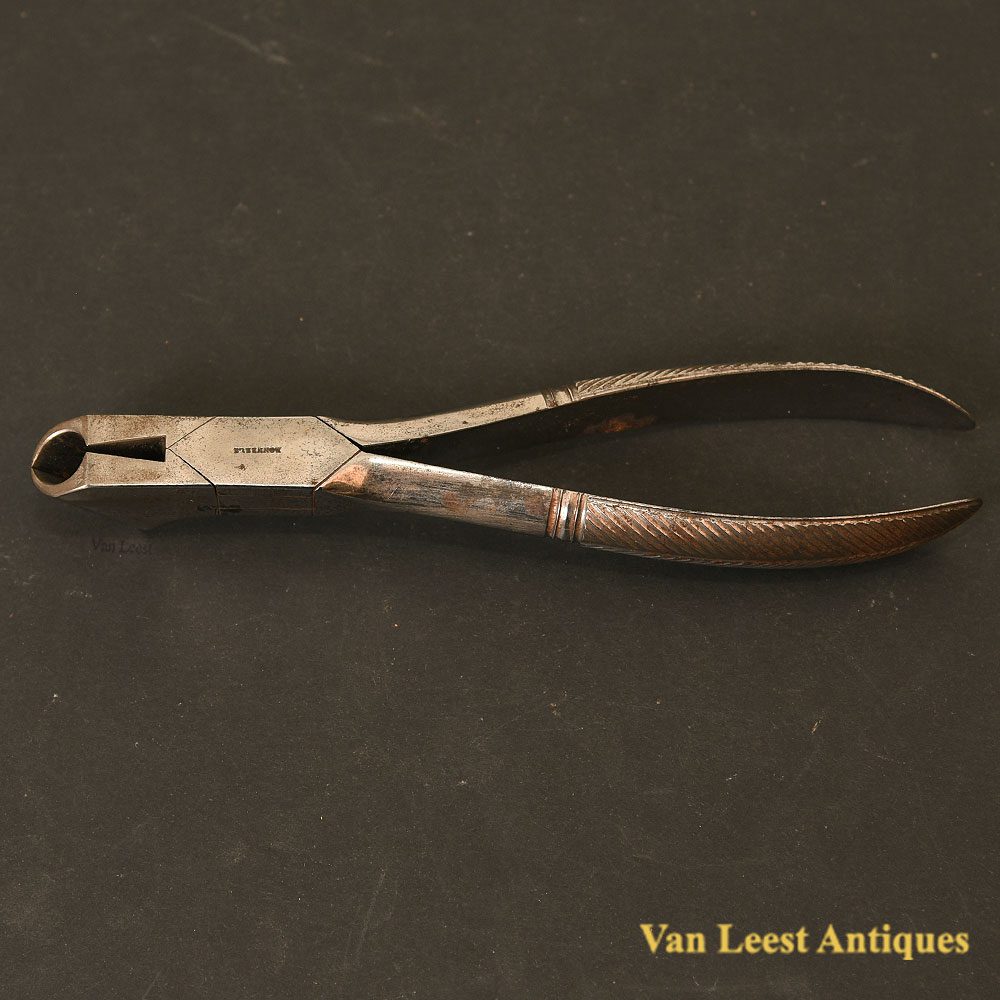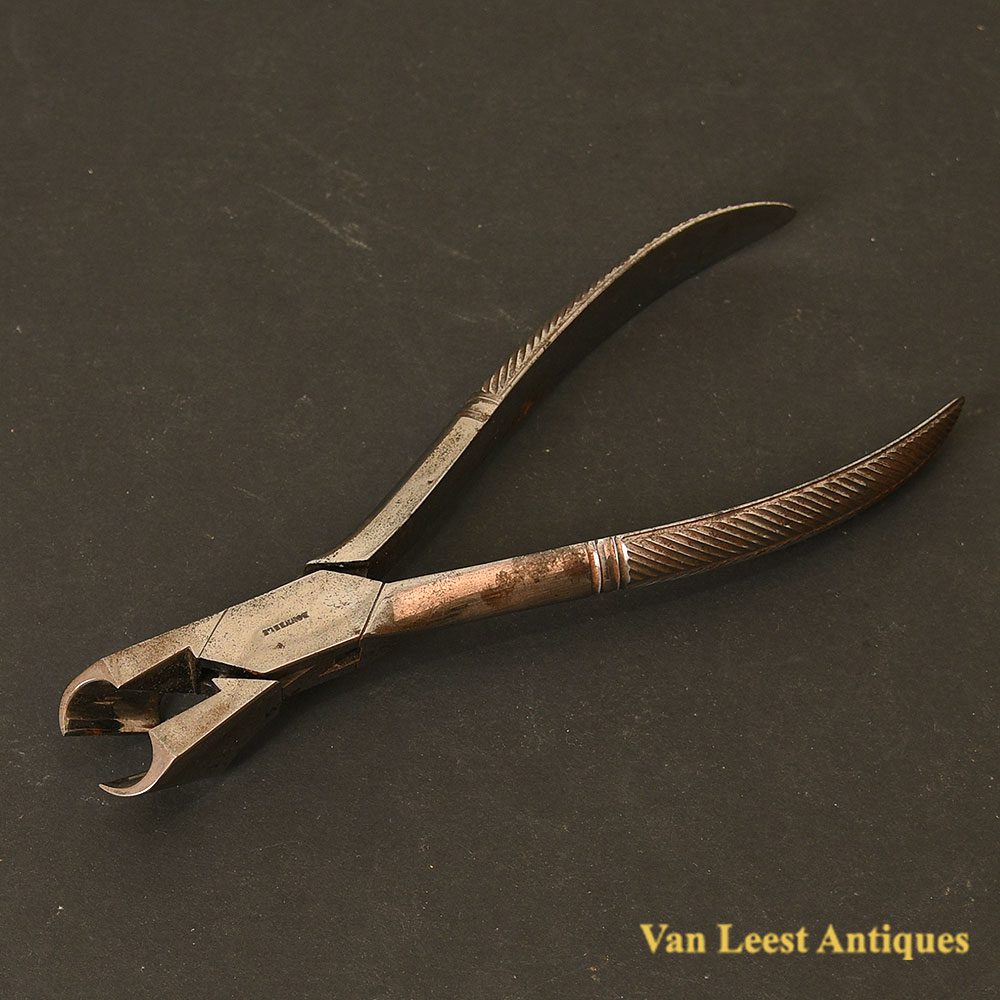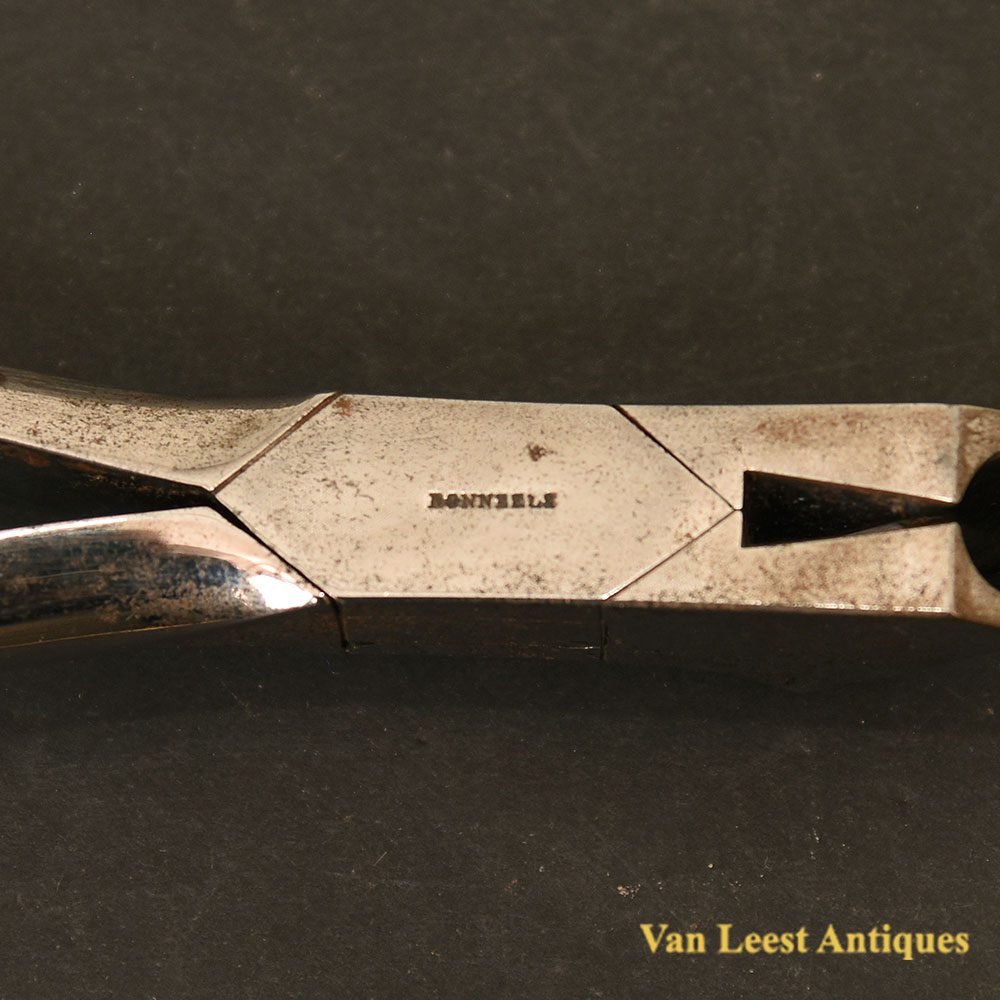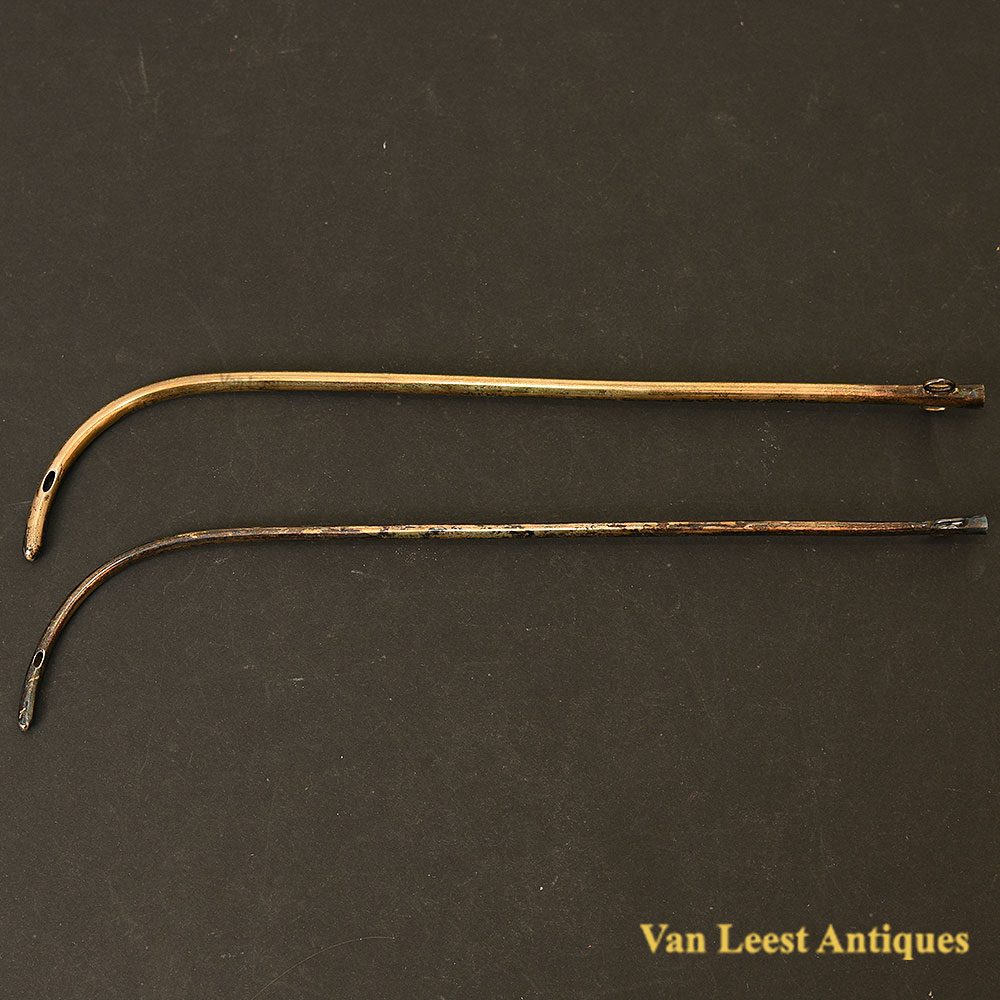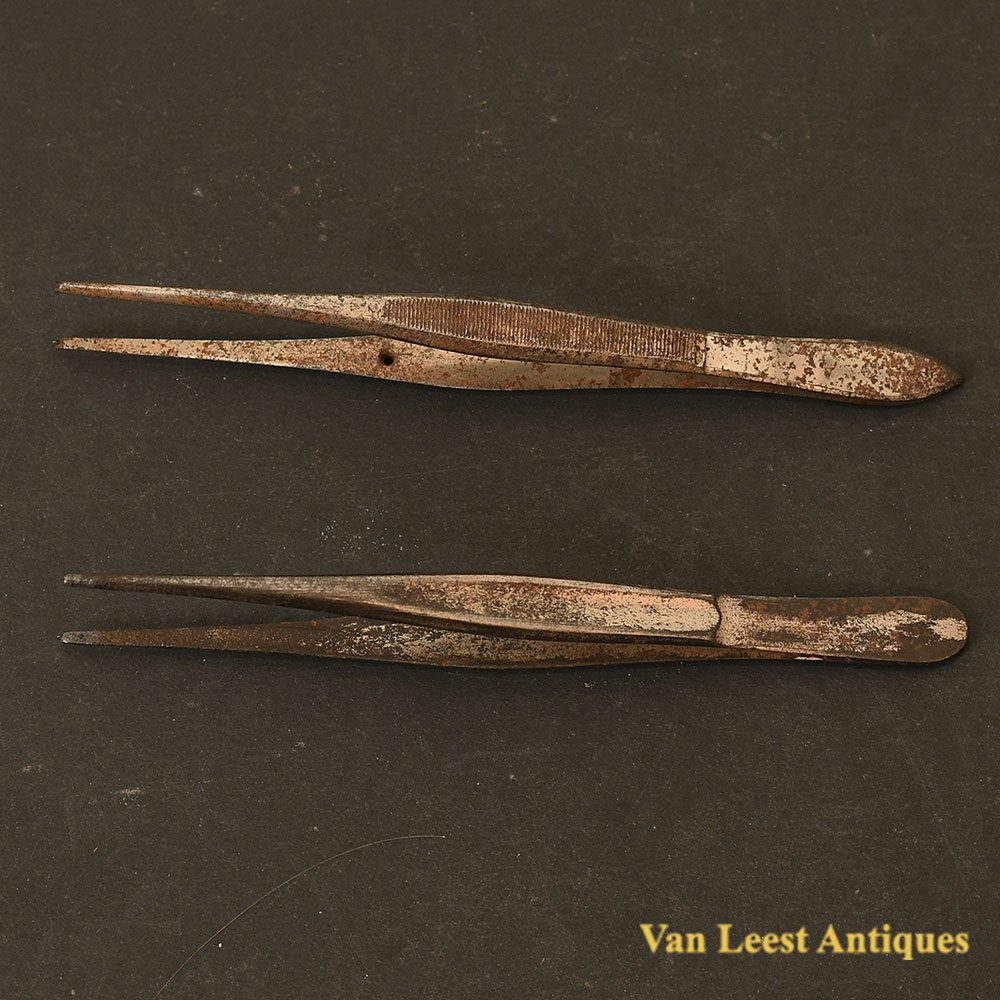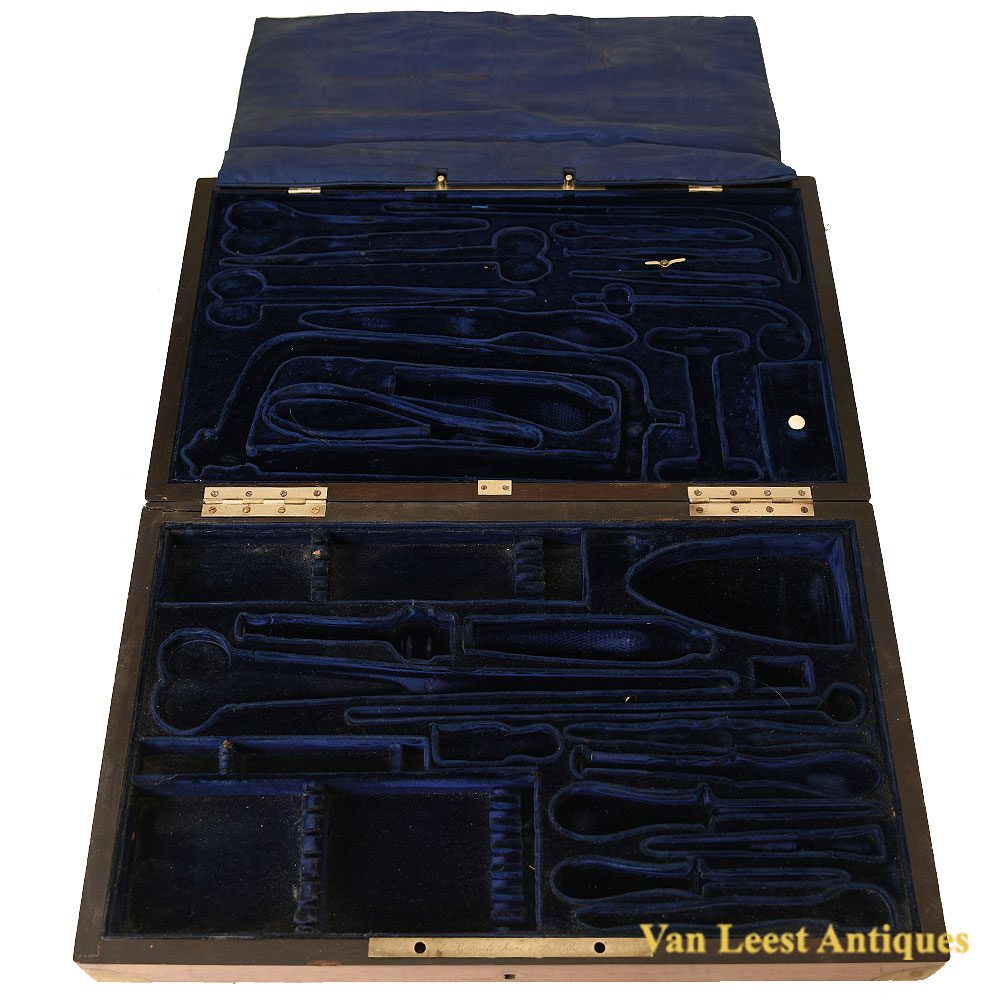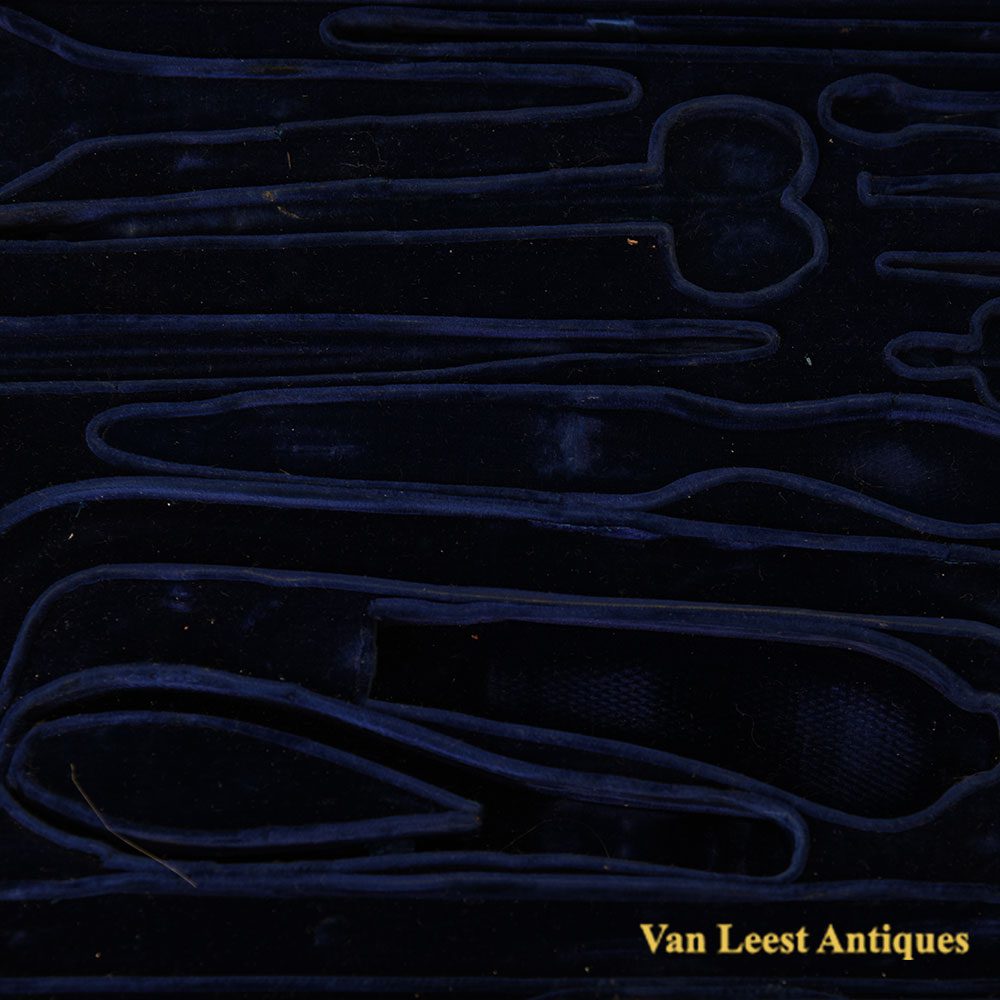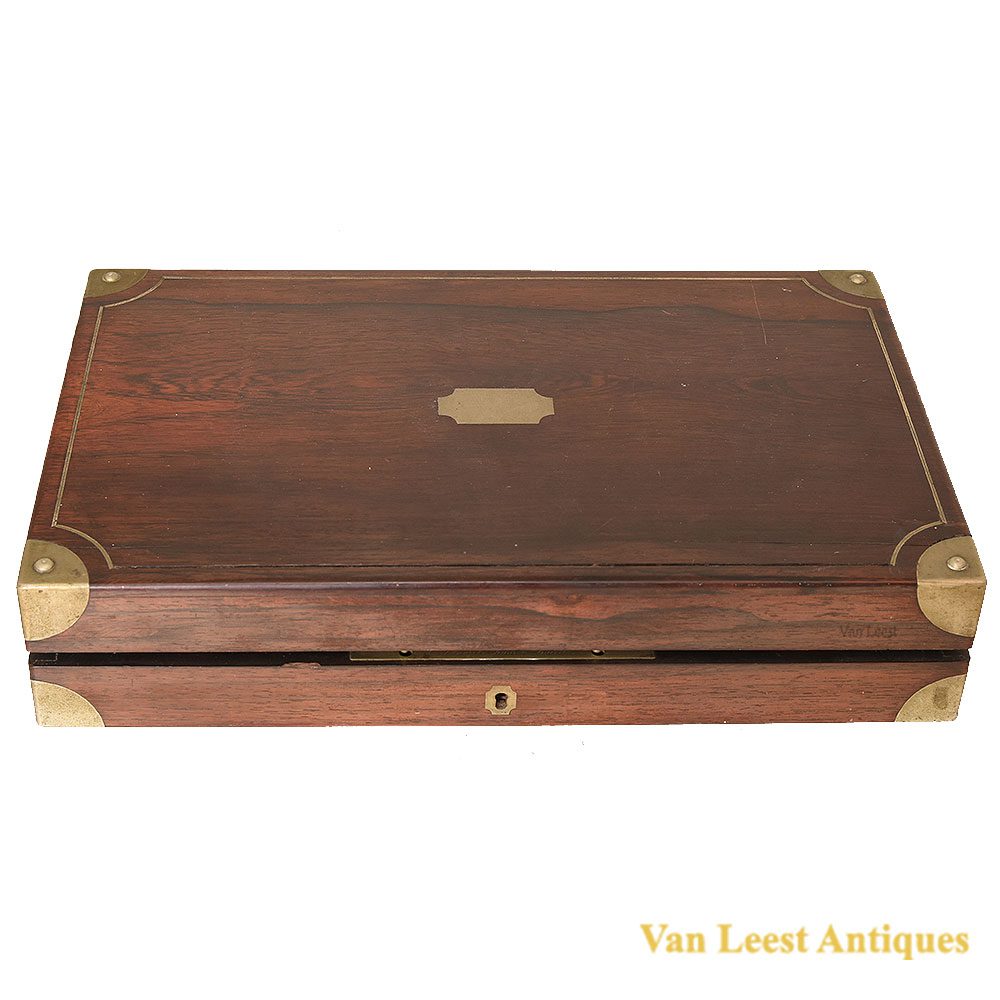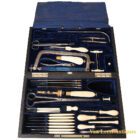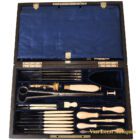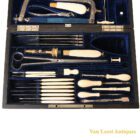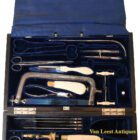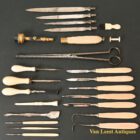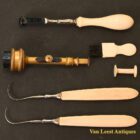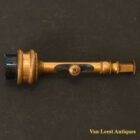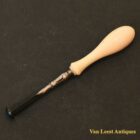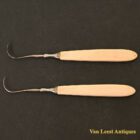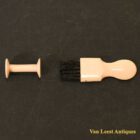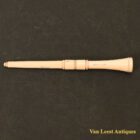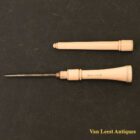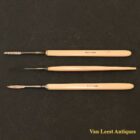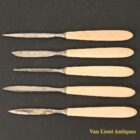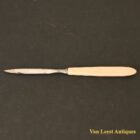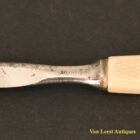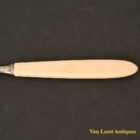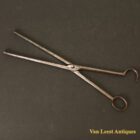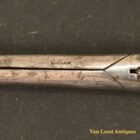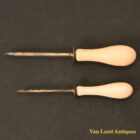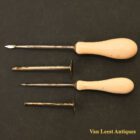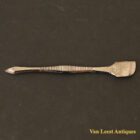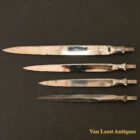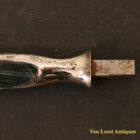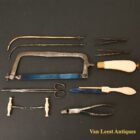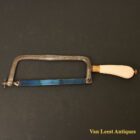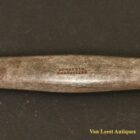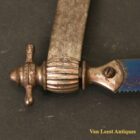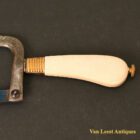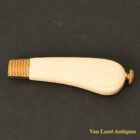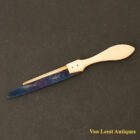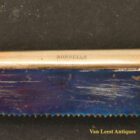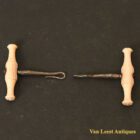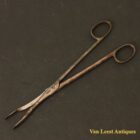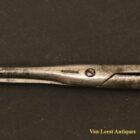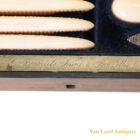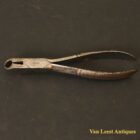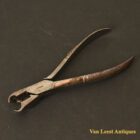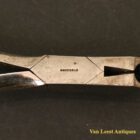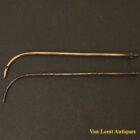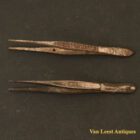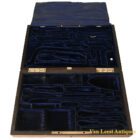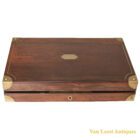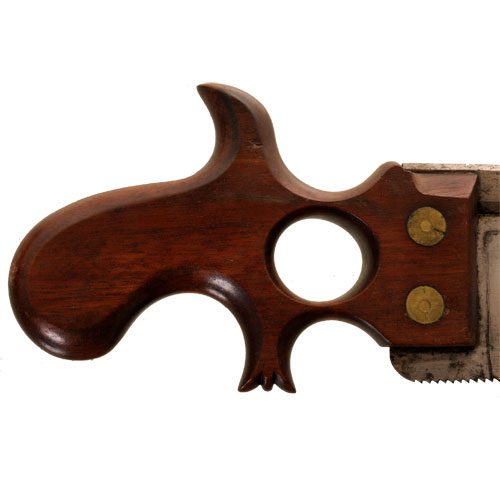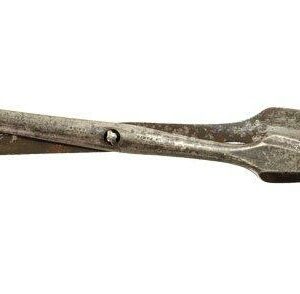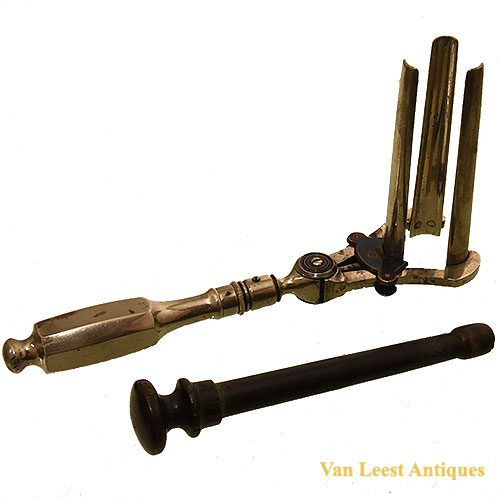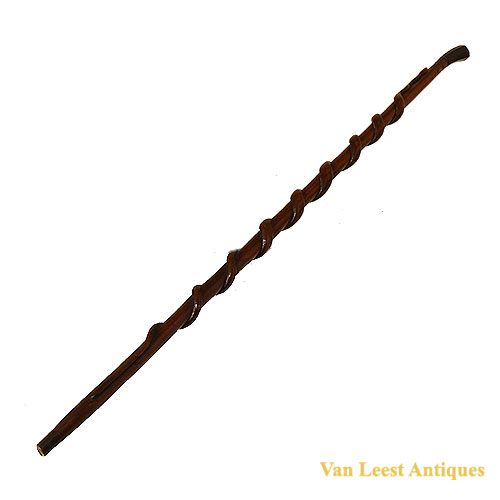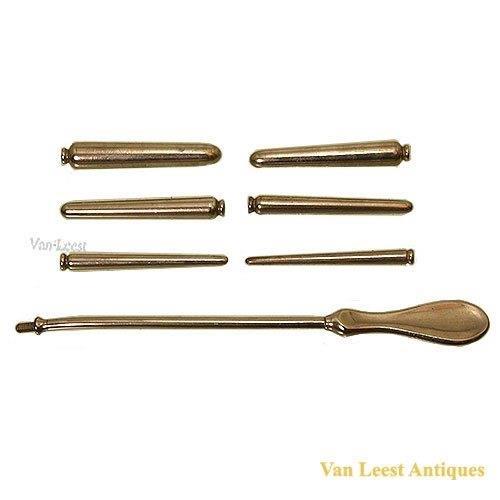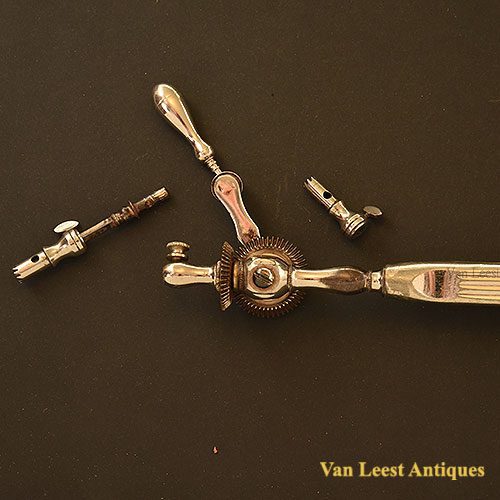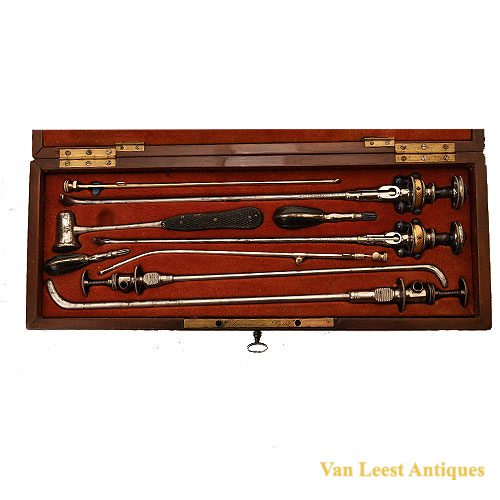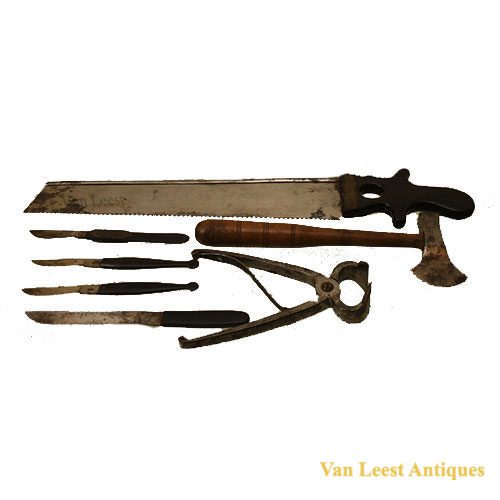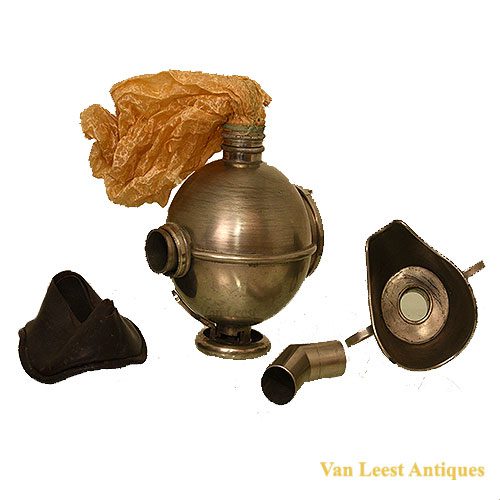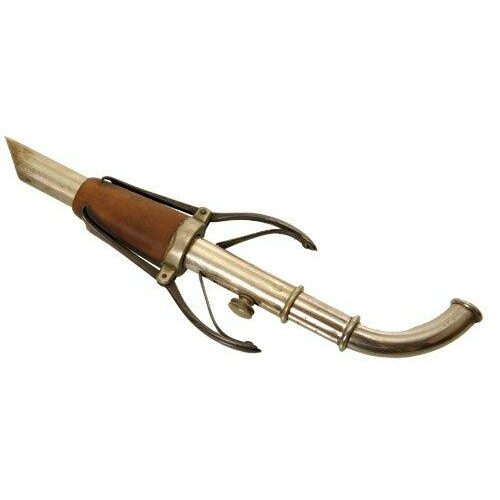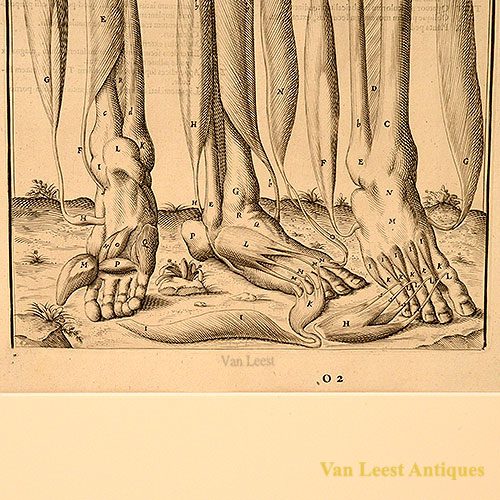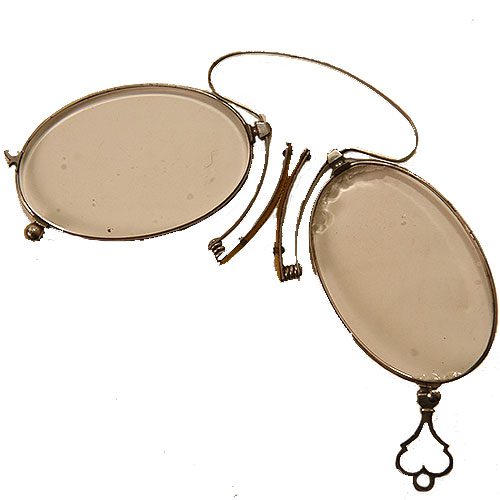Surgical exhibition set of T. Bonneels, c. 1835
Sold
Exceptional-quality polished walnut surgical case, blue velvet interior with 8 brass-reinforced corners by Bonneels-Brussels of circa 1835, containing 37 different parts.
At the upper drawer two large catheters, a small pair of steel signed forceps, a small saw with guilloche ivory handle, a large signed amputation saw, a removable guilloche ivory handle, a clamp, 2 Gigli flexible saw handles with straight line patterned ivory, two tweezers and two needle thread heads. At the lower drawer one superb trephine of blued steel and brass. The head is depth adjustable by a sliding screw on blued steel base. The trephine is in excellent condition and probably has never been used. A multi-purpose handle for the trephine is missing, it should also act as an elevator and bottom puller. Furthermore there is a lenticular with blued steel and ivory handle, the stem beautifully decorated, a bone splinter brush with ivory handle and boar bristles, two large trocars of silver and ivory, one small trocar with in an ivory case, a metal elevator, five signed knives of steel with guilloche ivory handles, two signed hooks with guilloche ivory handles, three eye surgical knives with ivory handles, of which two signed by Bonneels and one ‘S. Pohl S’ Hage’. This is a replacement by the instrument maker Jonas Pohl, who established a surgical instrument factory in 1854 in The Hague. Additionally there is a large bullet extractor of steel, a roll of bone suture thread and lastly four signed amputation saws with a guilloche ivory handle.
Inventions and improvement in 19th century Belgian industry
Natalis Briavoinne (1799 – 1869) wrote a brief description in 1838 on Bonneels in his book on industrial progress in Belgium: ‘On Inventions and Improvements in Industry from the End of the 18th Century to Today: In response to the question: Indicate the precise timing of inventions, imports, and improvements that have successively contributed to the progress of industrial arts in Belgium, from the last years of the 18th century to today, and identify the people who were the first to use them among us.’ (original French title down below).
In the conclusion Briavoinne stated that writing this book was ‘a source of satisfaction to have been able to represent, to the public, this elite group of diligent and enterprising individuals, especially in the presence of an audience whose dedication to science and national pride enables it to understand my purpose so well. I could not help but feel genuine joy in recording the names of so many useful Belgian figures—names that, otherwise, might have been forgotten or overlooked.’
About Bonneels, Briavoinne wrote that ‘It was Mr. François-Jean Bonneels, from Dendermonde, who established the first facility for the manufacture of surgical instruments. He had gone to study the principles of his craft in the best workshops in Paris. The Austrian government called Mr. Bonneels to Brussels in 1787 to attach him to the university, which had recently been transferred from Louvain to the capital.
François-Jean Bonneels was succeeded by his son, to whom the high level of perfection achieved in the making of surgical instruments in Belgium is primarily attributed. This skilled manufacturer, for the past twenty years he has led the workshops created by his father, has continuously progressed in his work. Not only does he adapt and promptly execute foreign industrial innovations, but more than once he has contributed improvements based on his own studies. All the workers he employs are Belgians and trained by him.
Among the products exhibited by Mr. Bonneels in 1835, which earned him the gold medal at the time, were the trepan crown, which he perfected, and a collection of instruments for treating eye diseases. He was the first in the country to produce devices designed to correct spinal deformities.’
We believe this is one of the sets presented by Timothée-Félix Bonneels during 1835 exhibition as the trephine and eye surgery instruments are part of the set. Timothée-Félix Bonneels was the successor of his father François-Jean Bonneels.
Dimensions: 24,8 x 40 x 8 cm.
